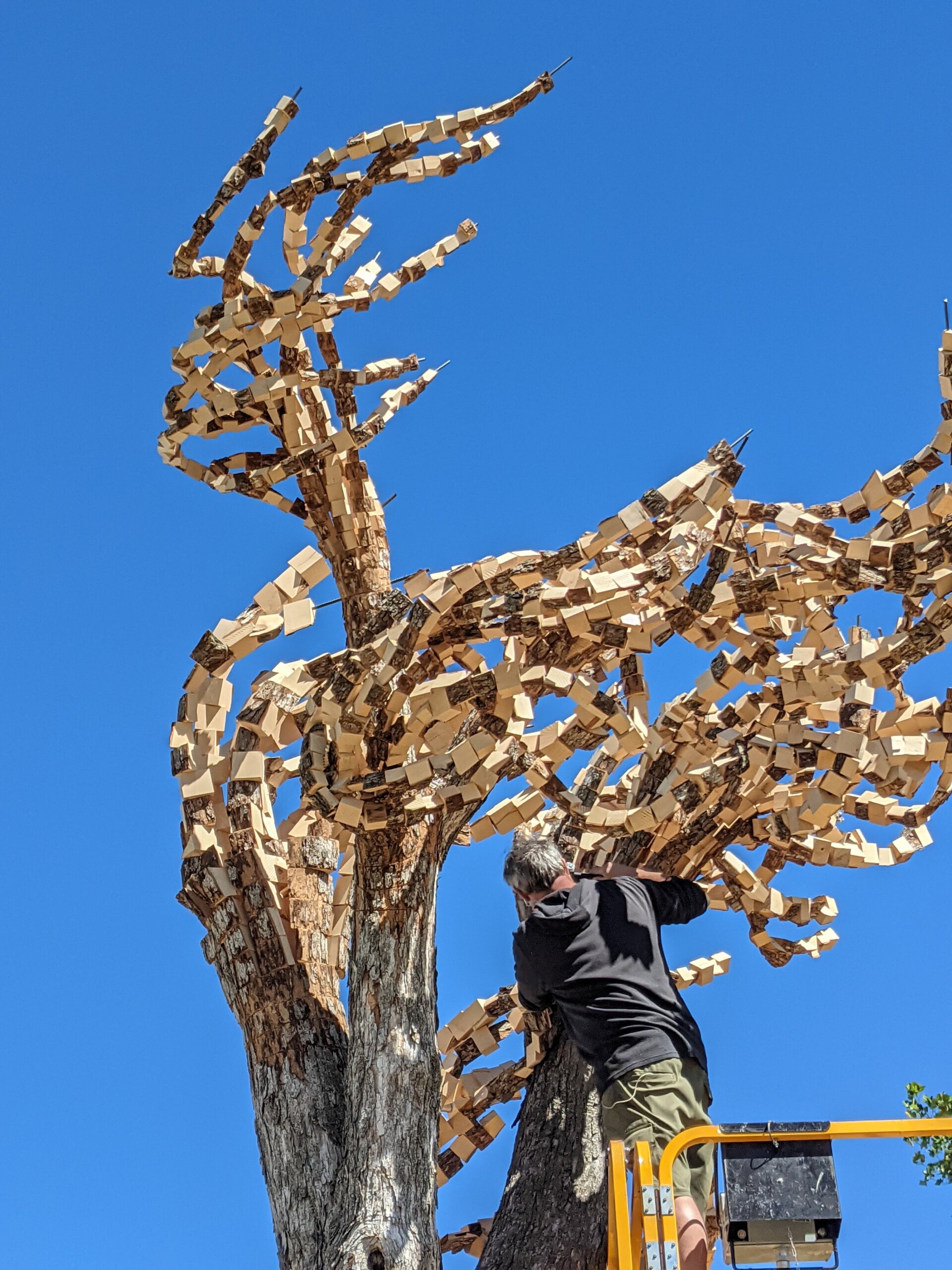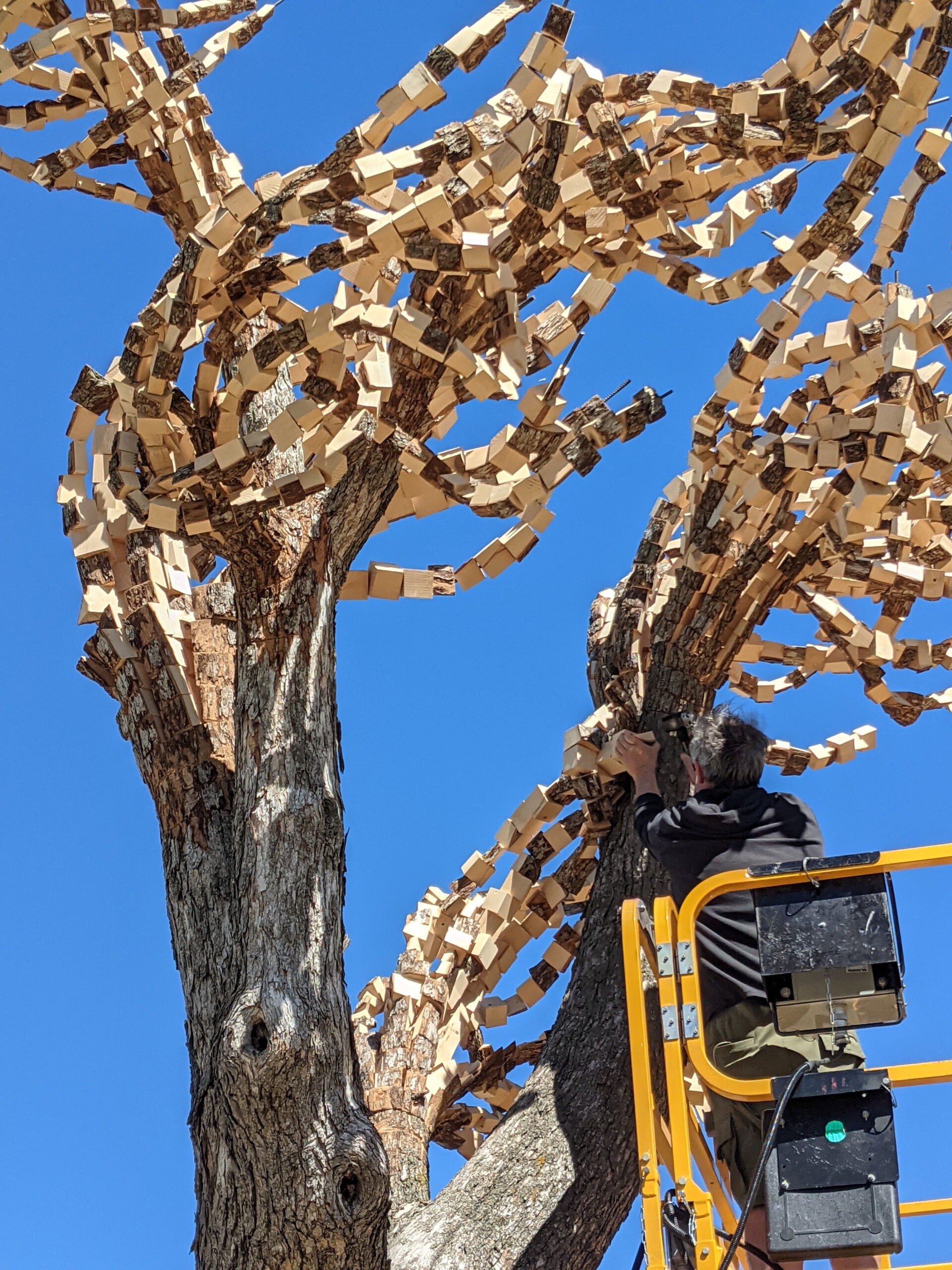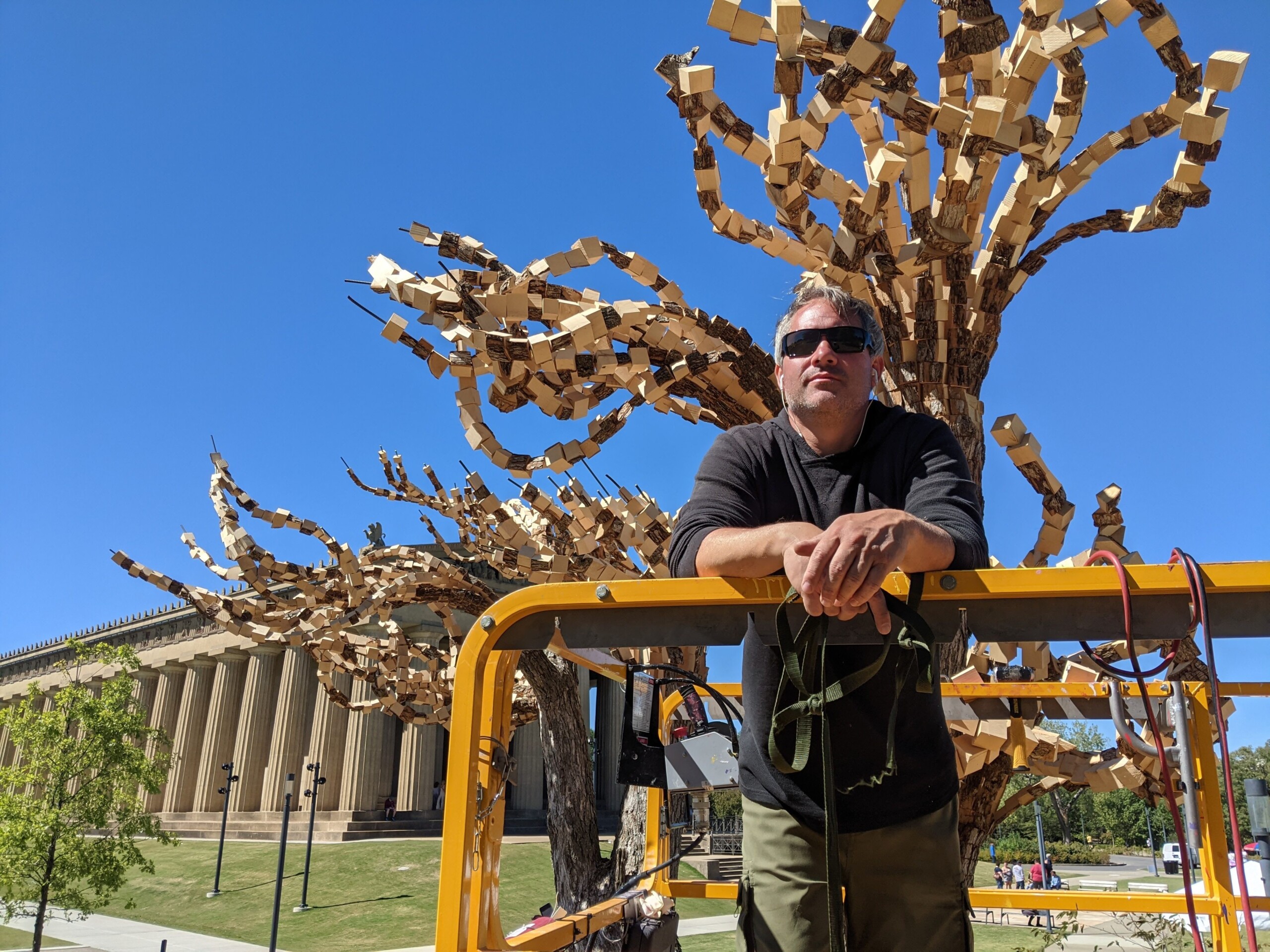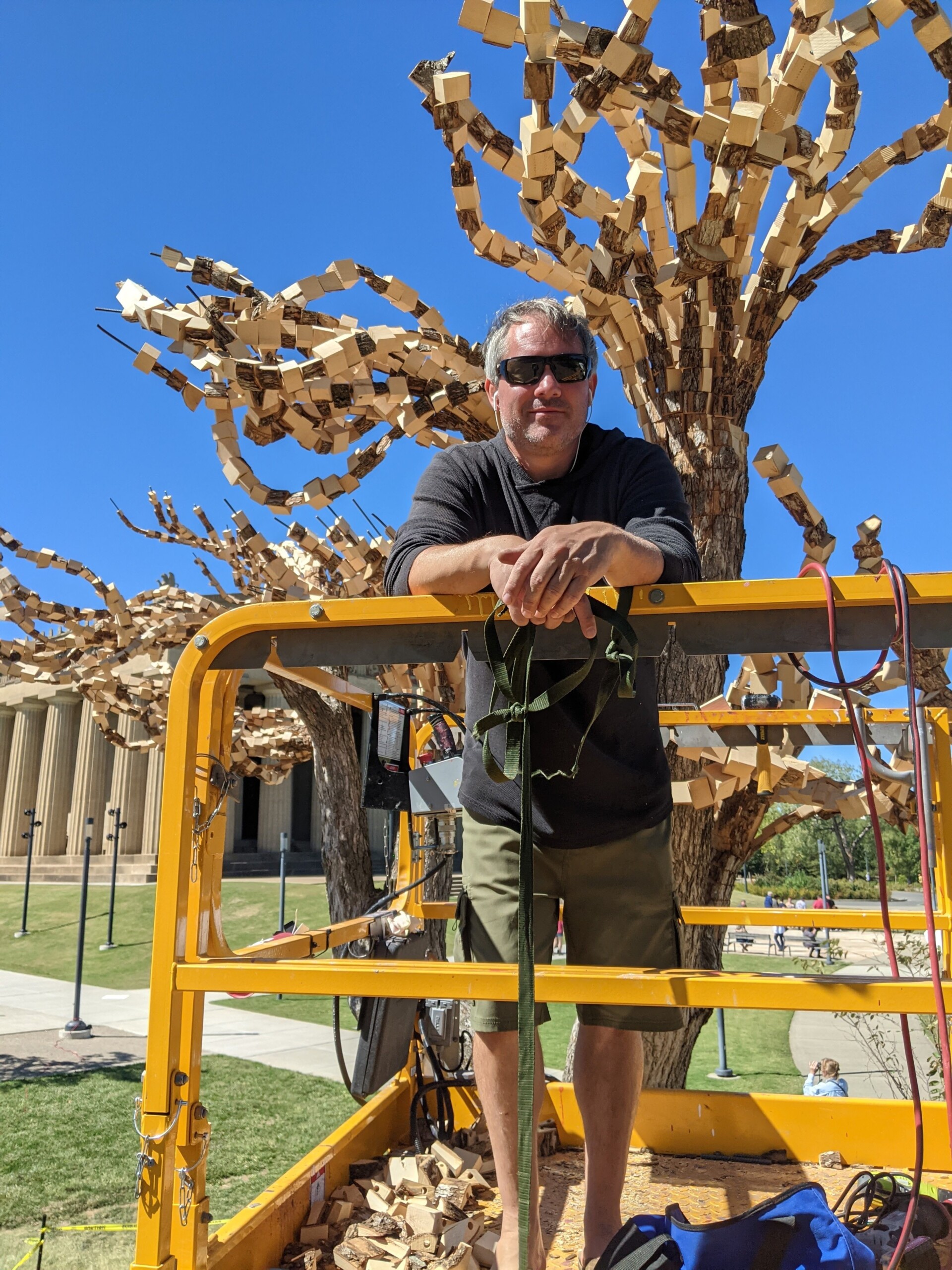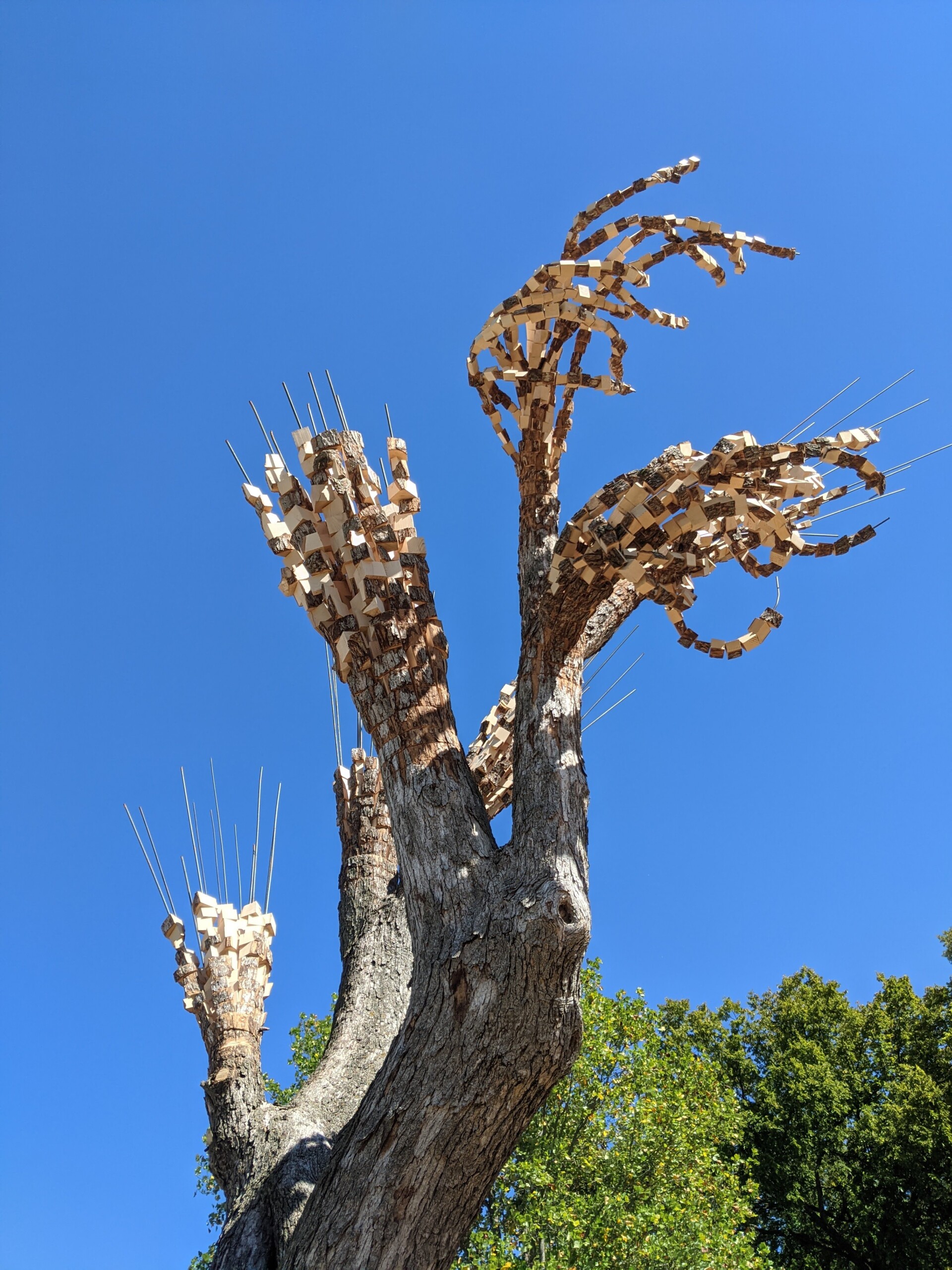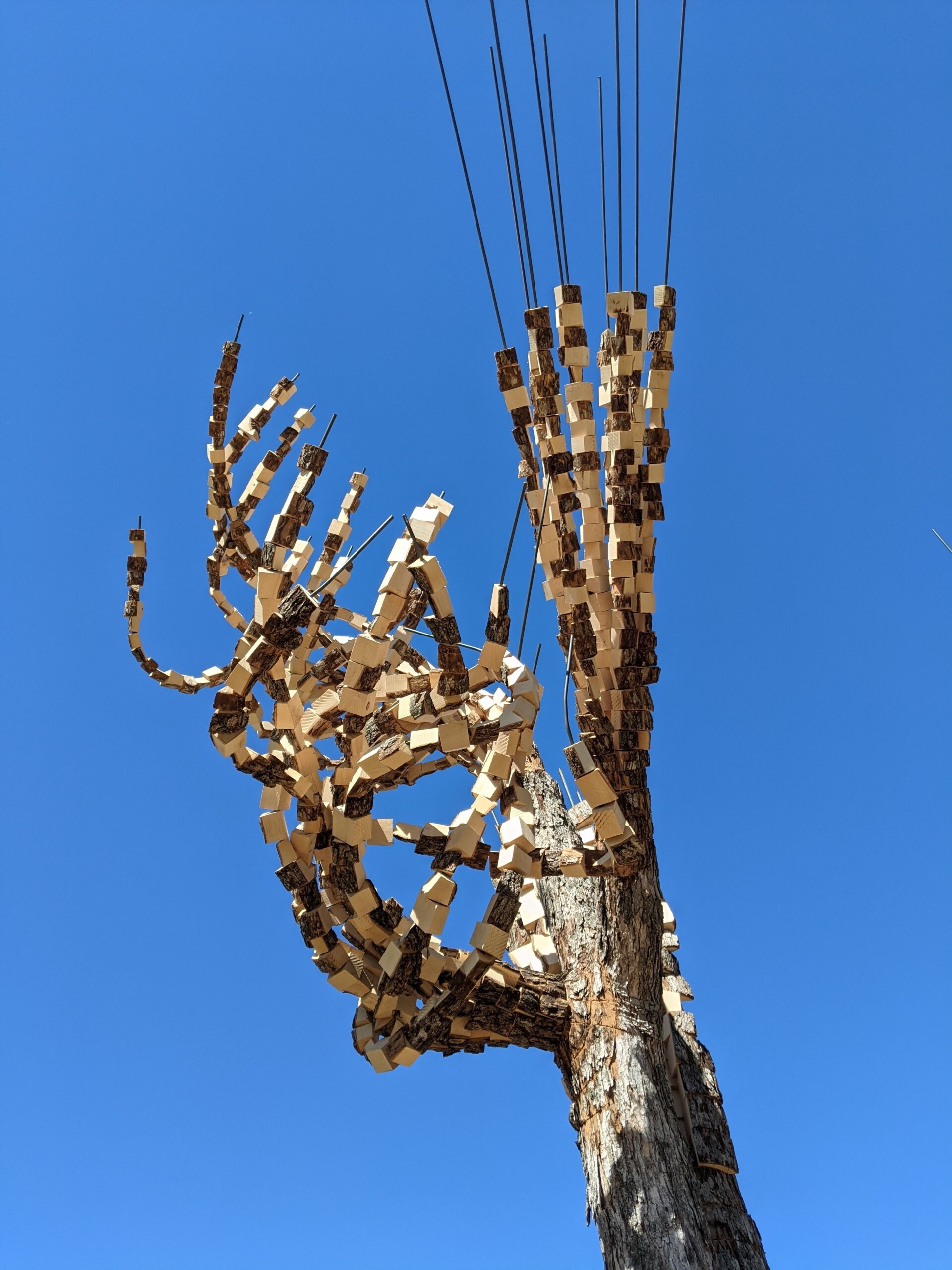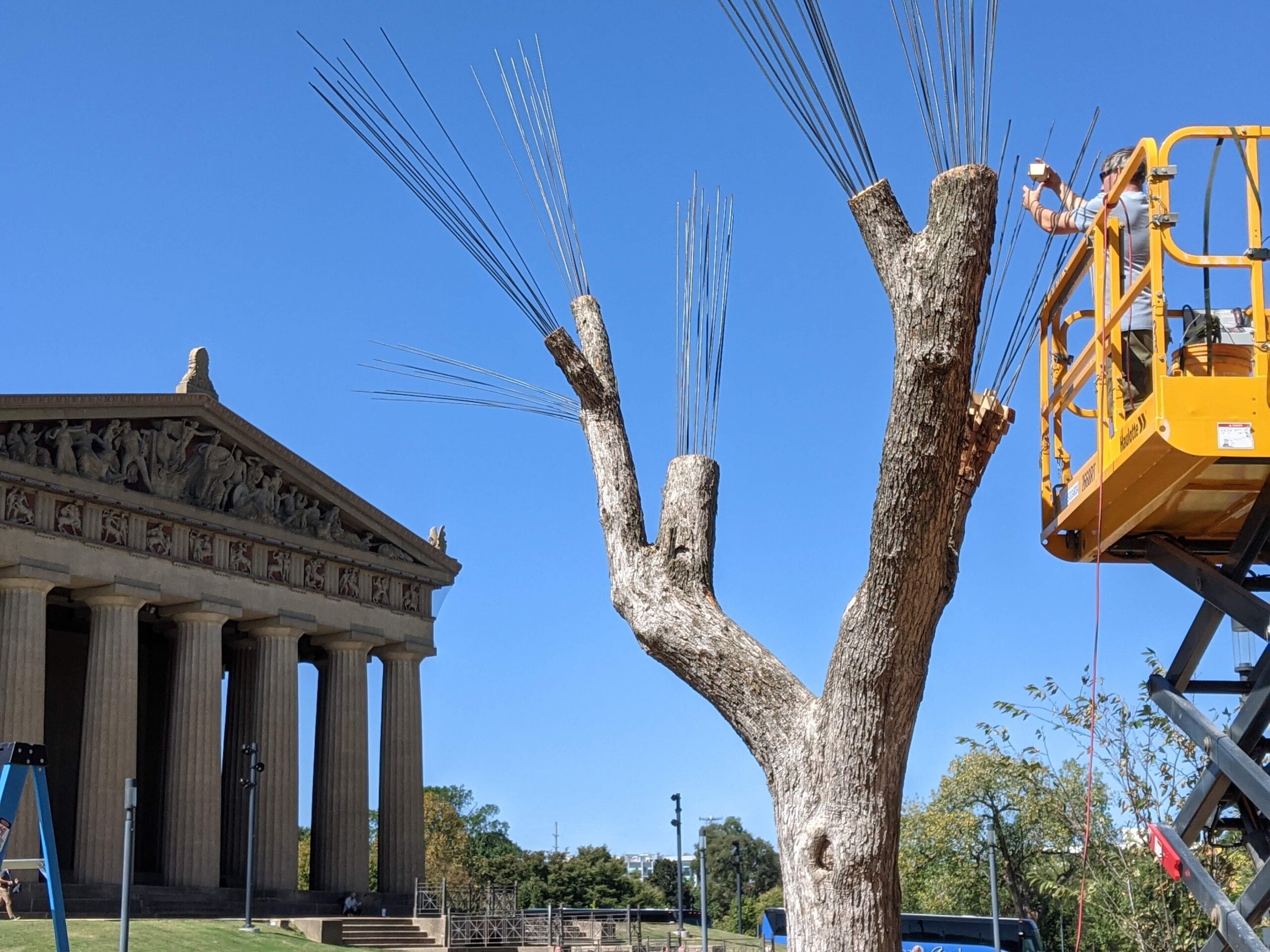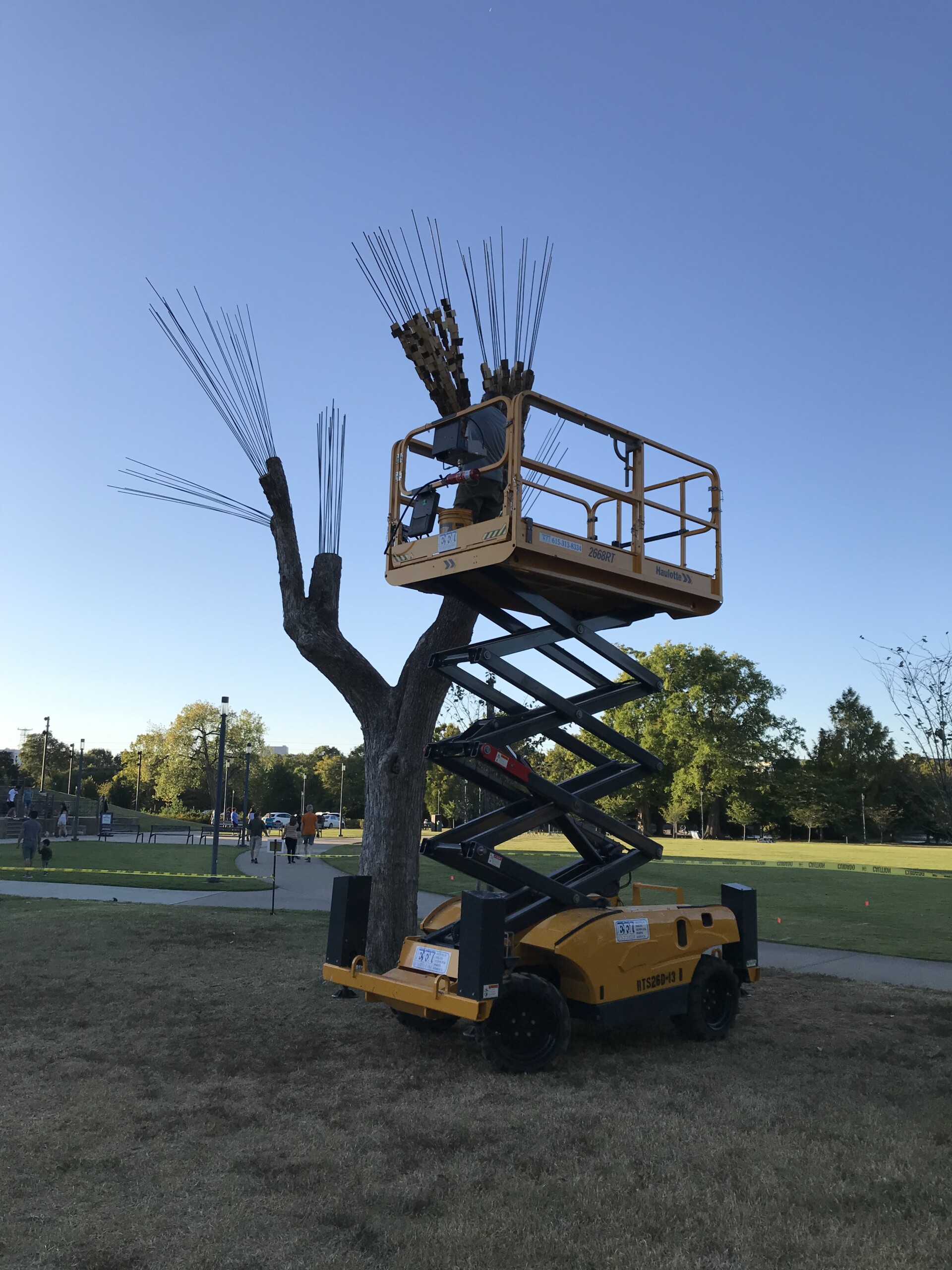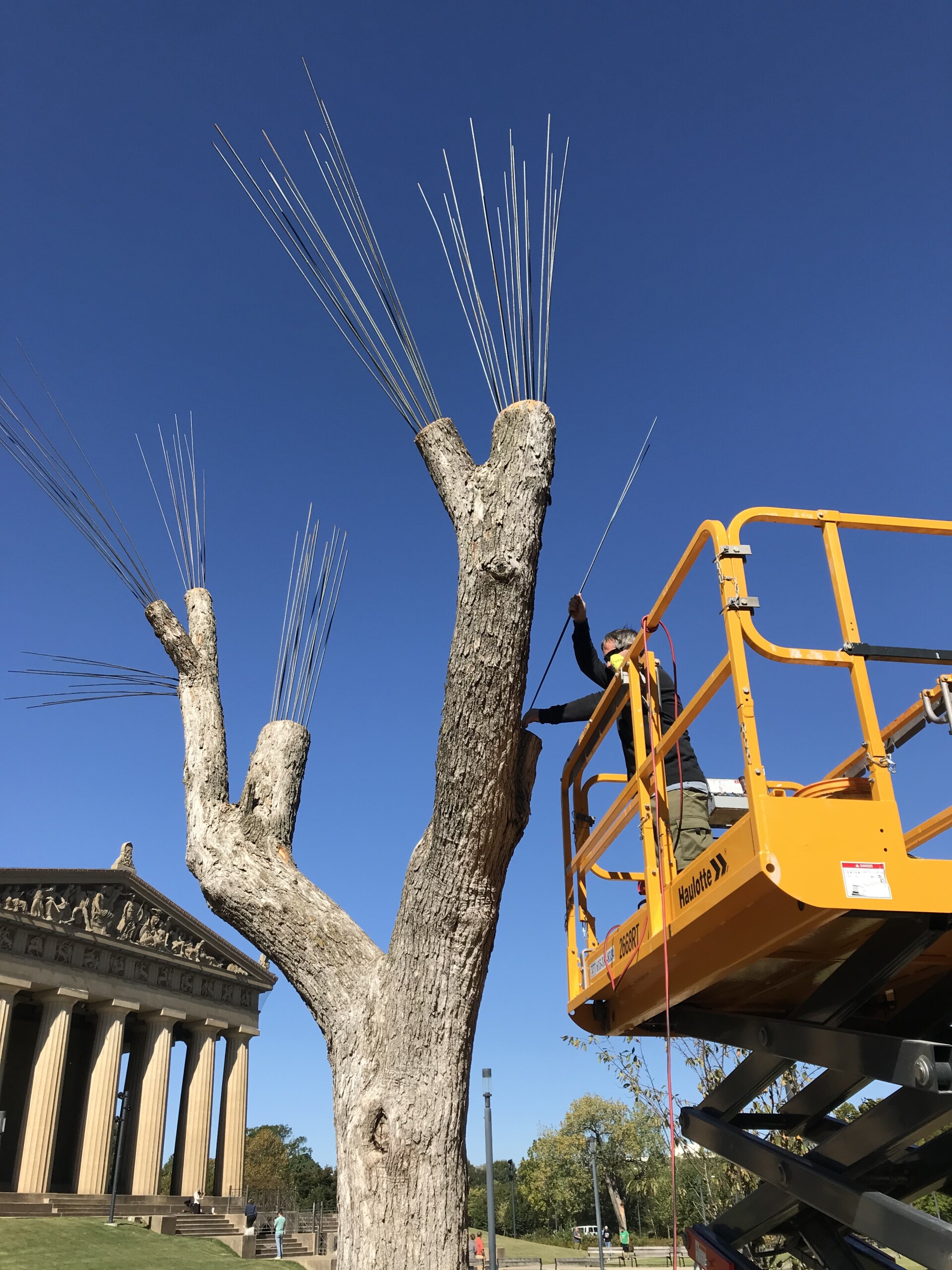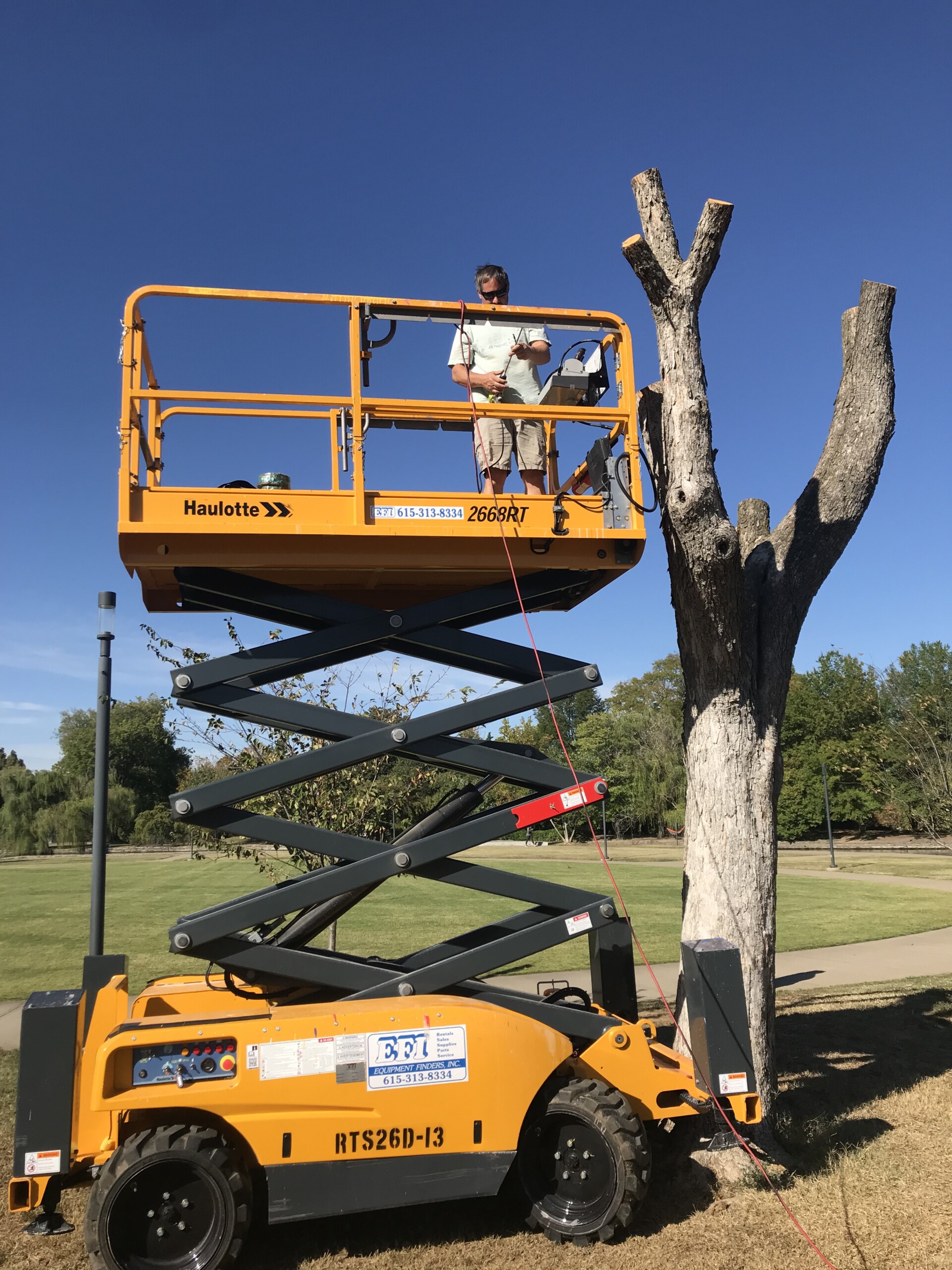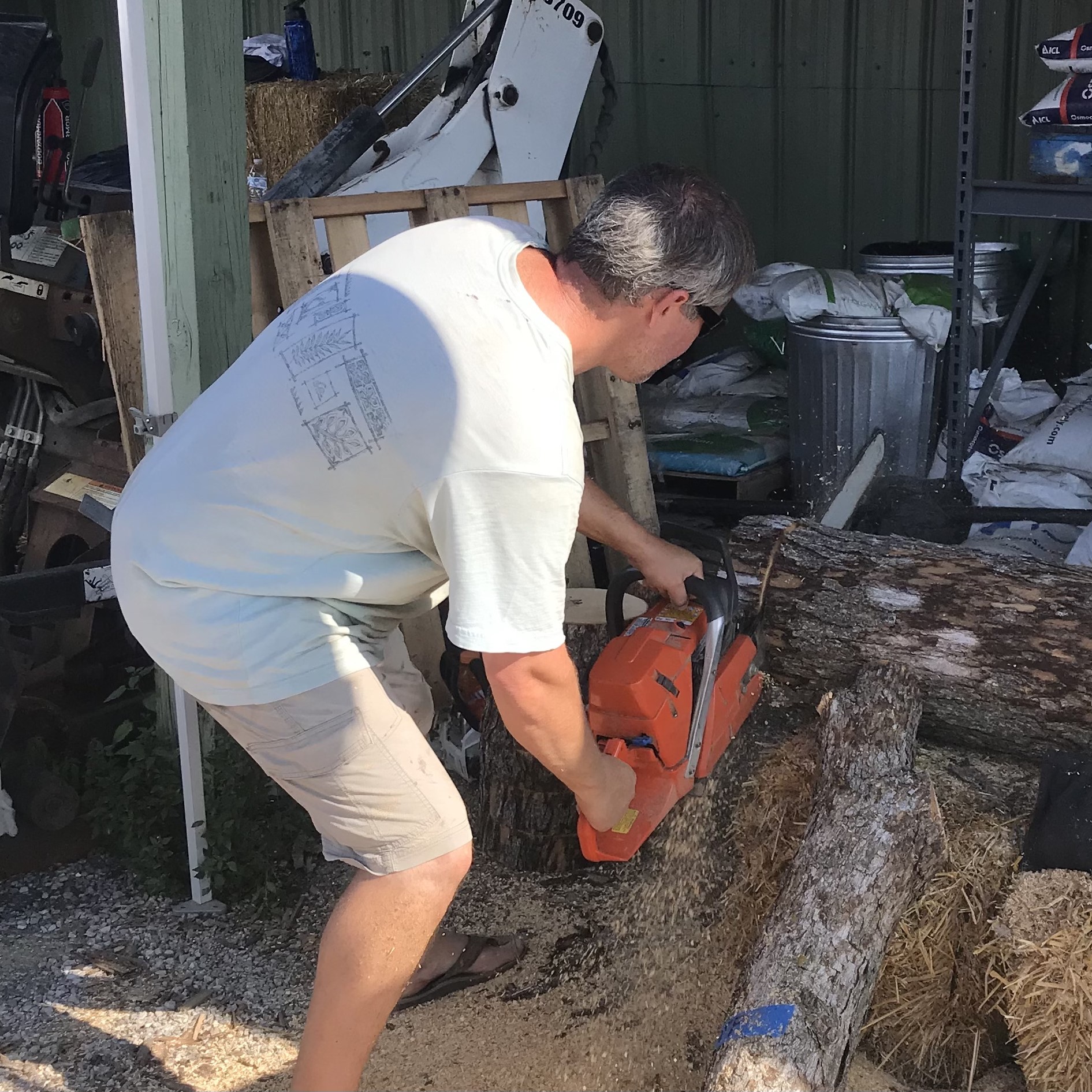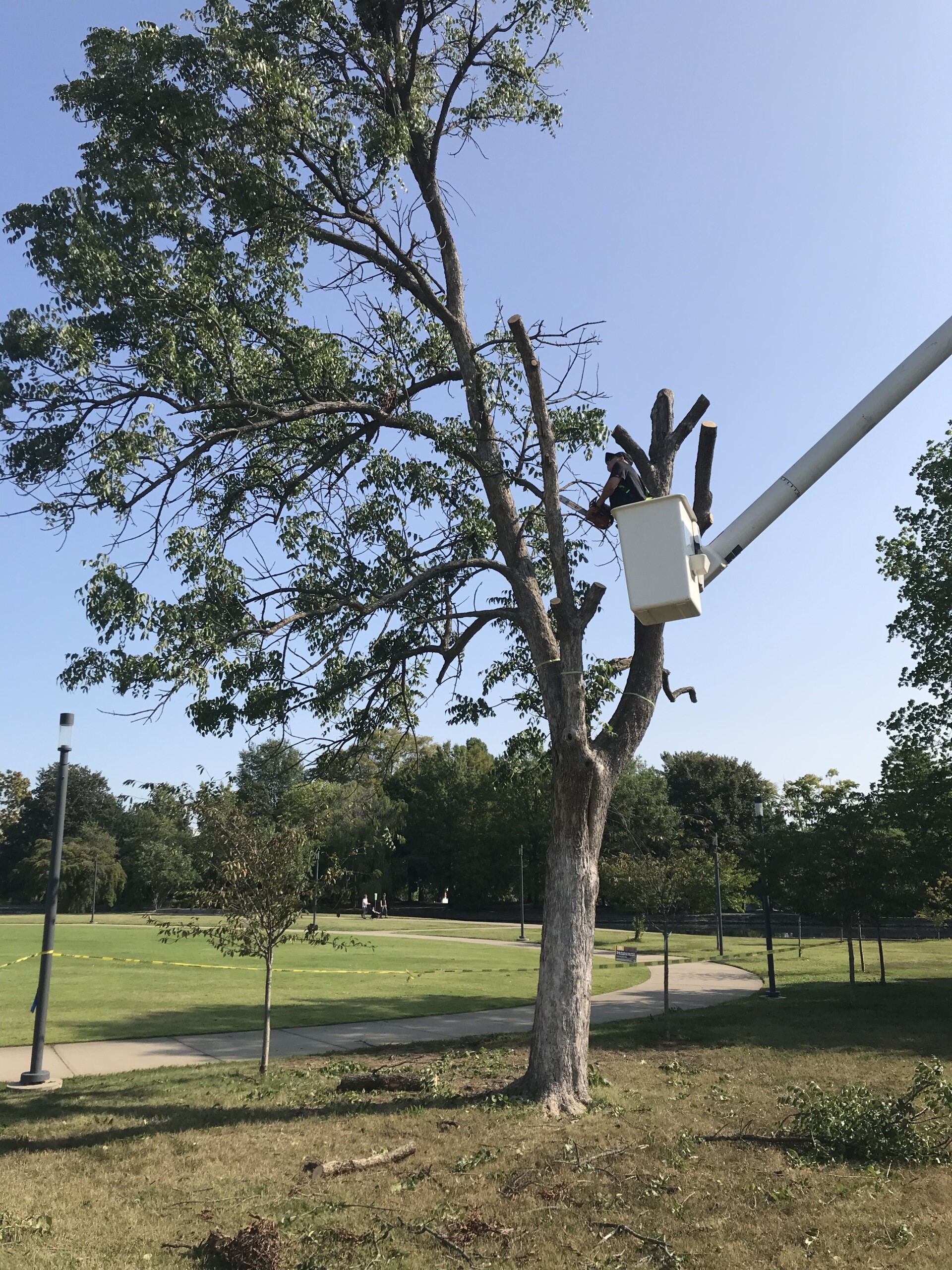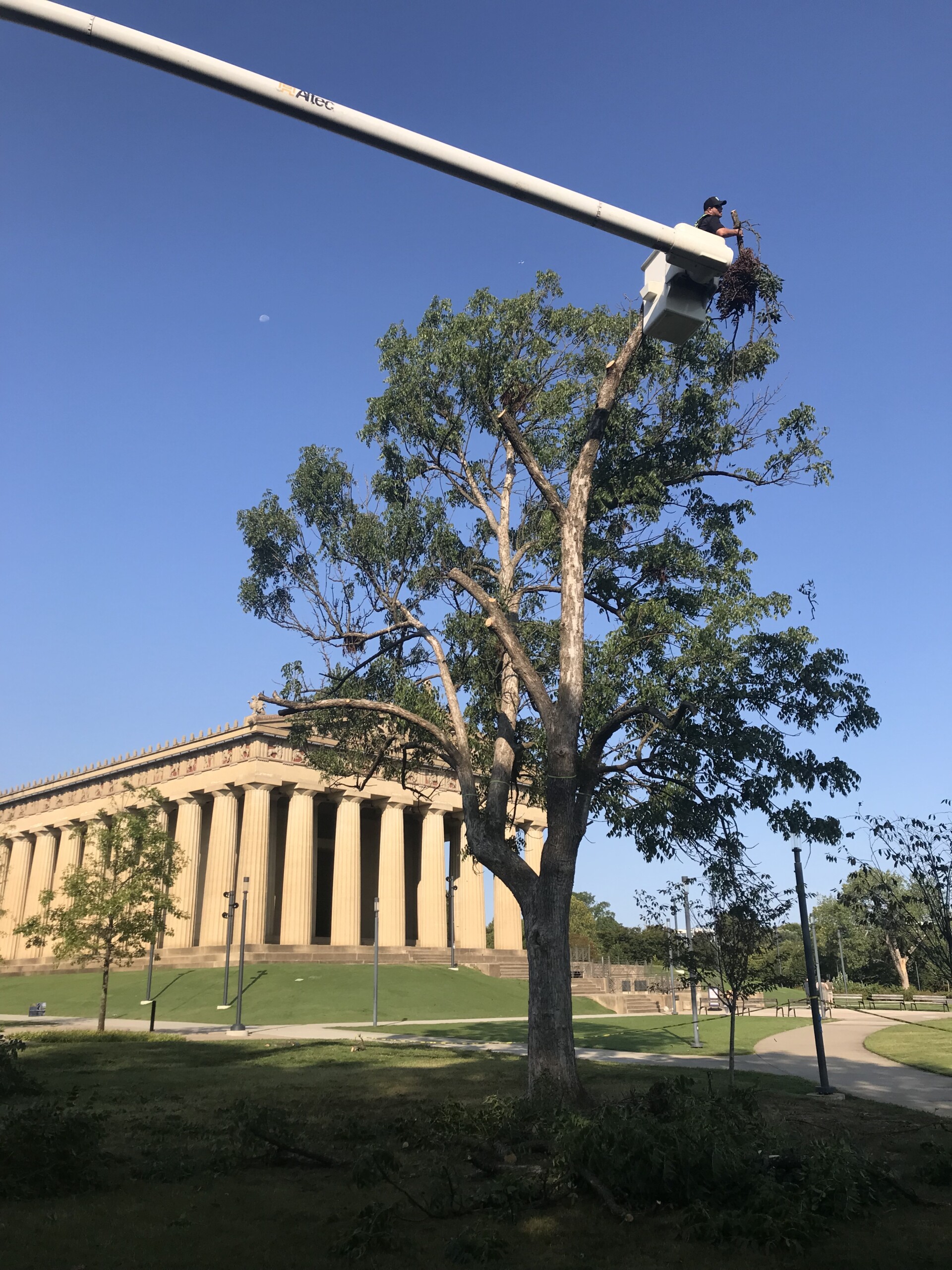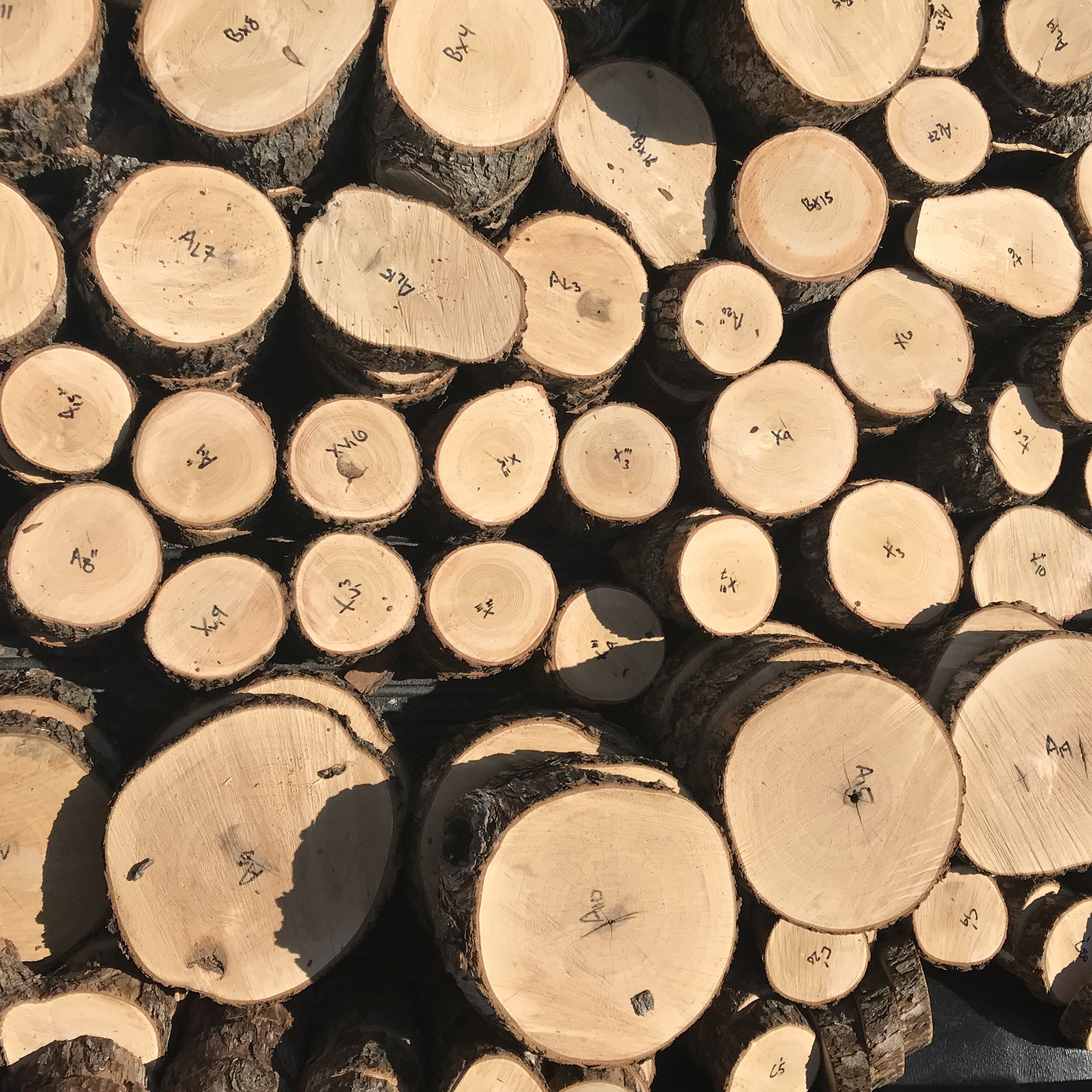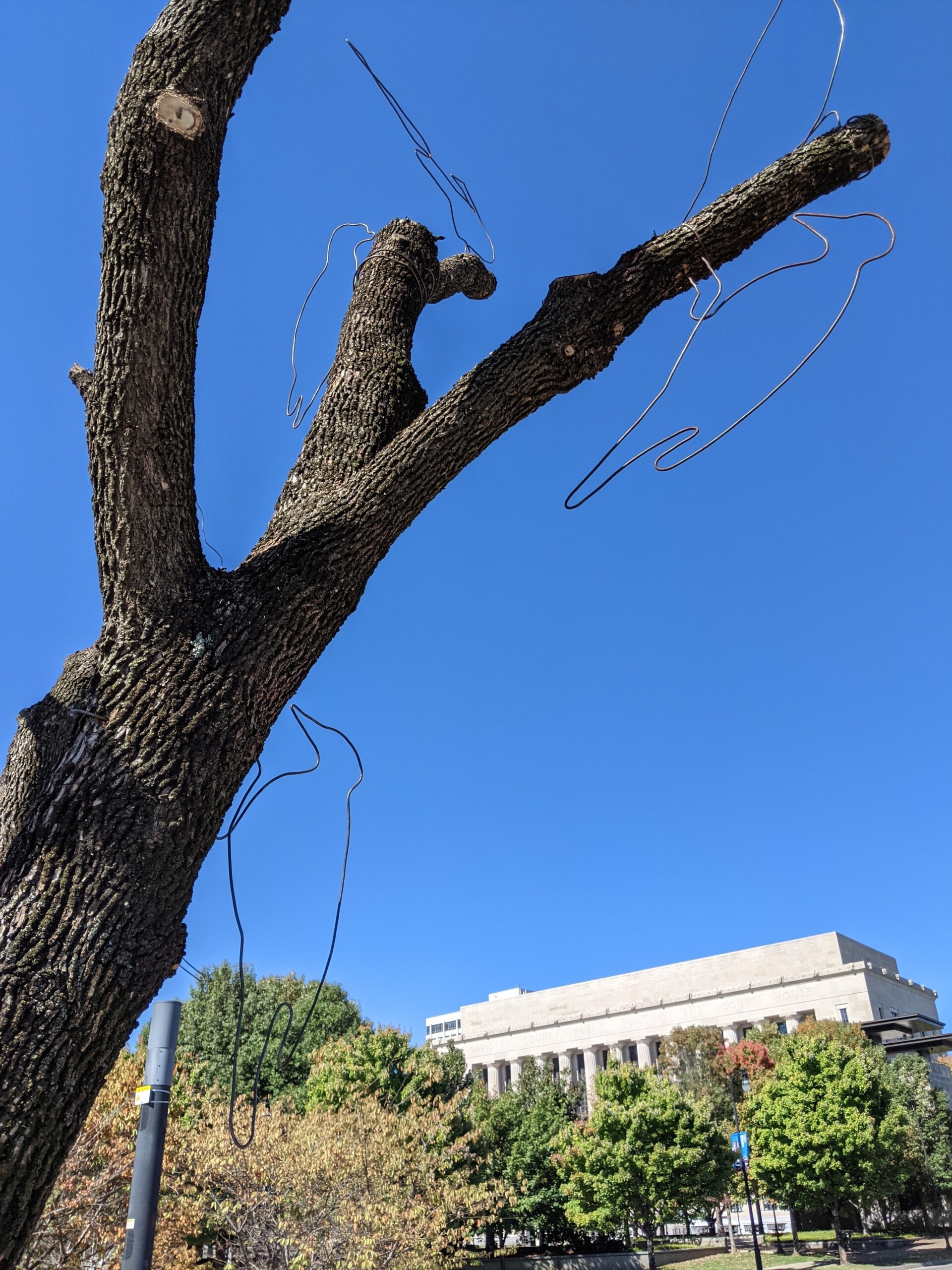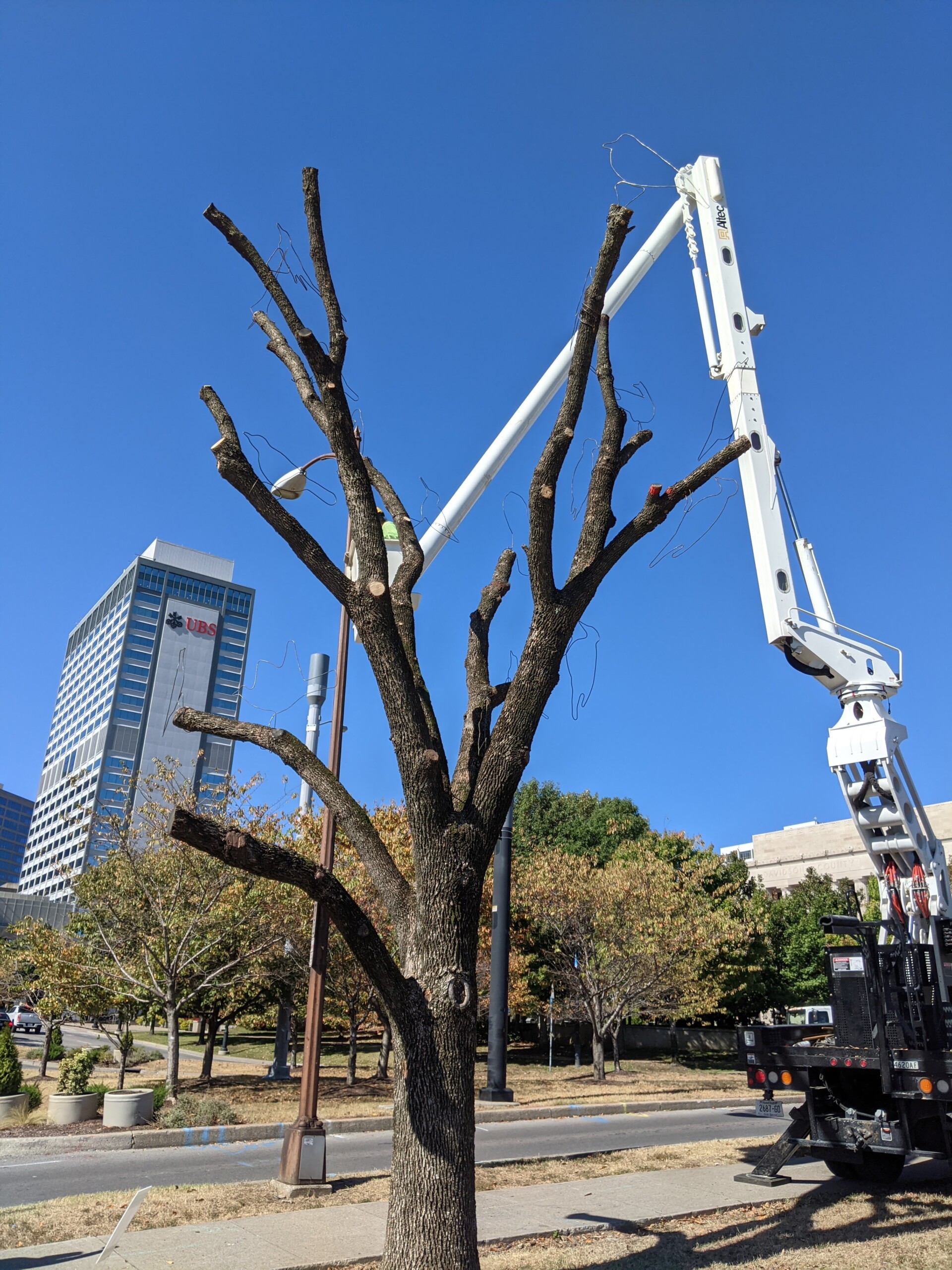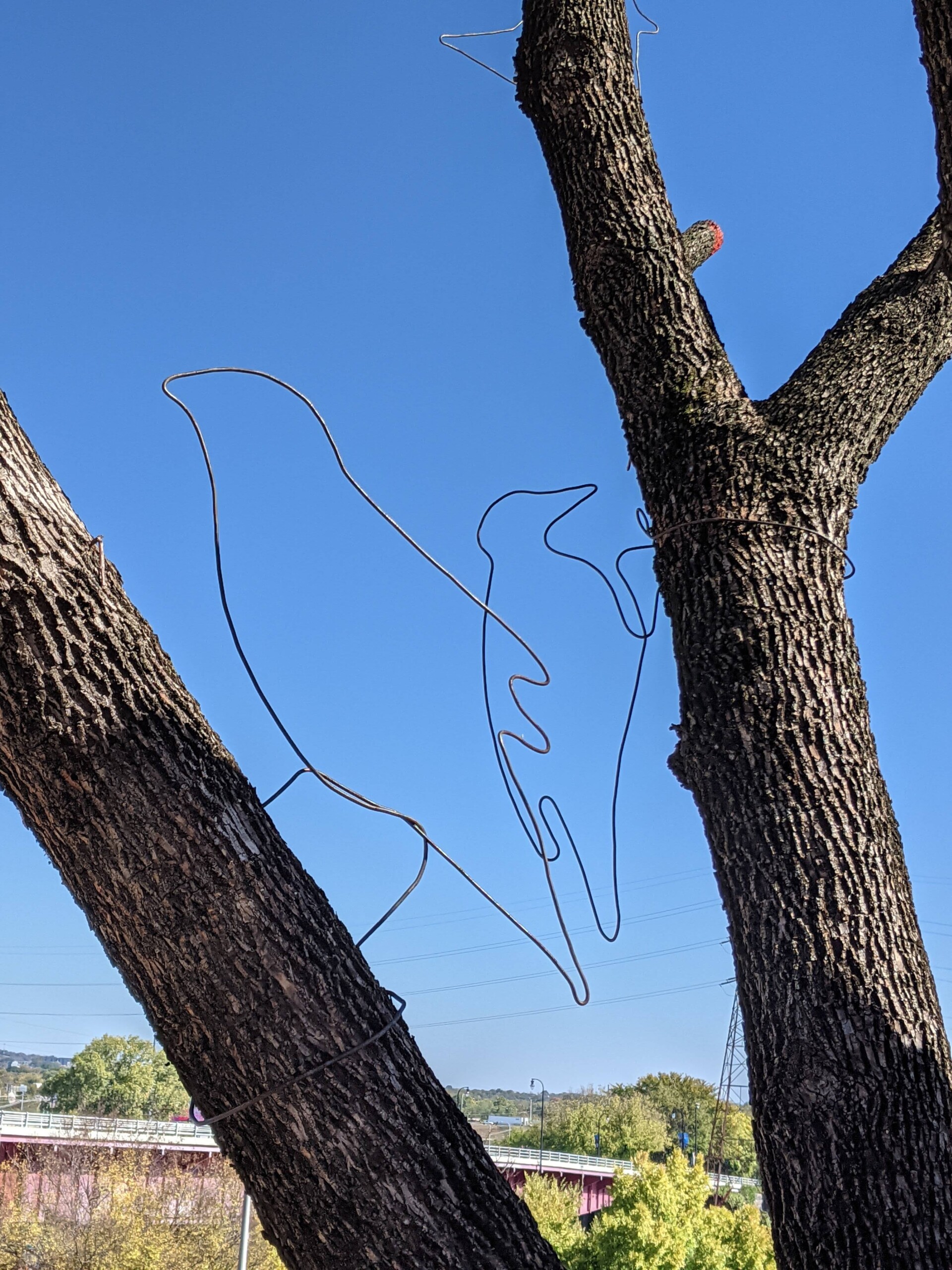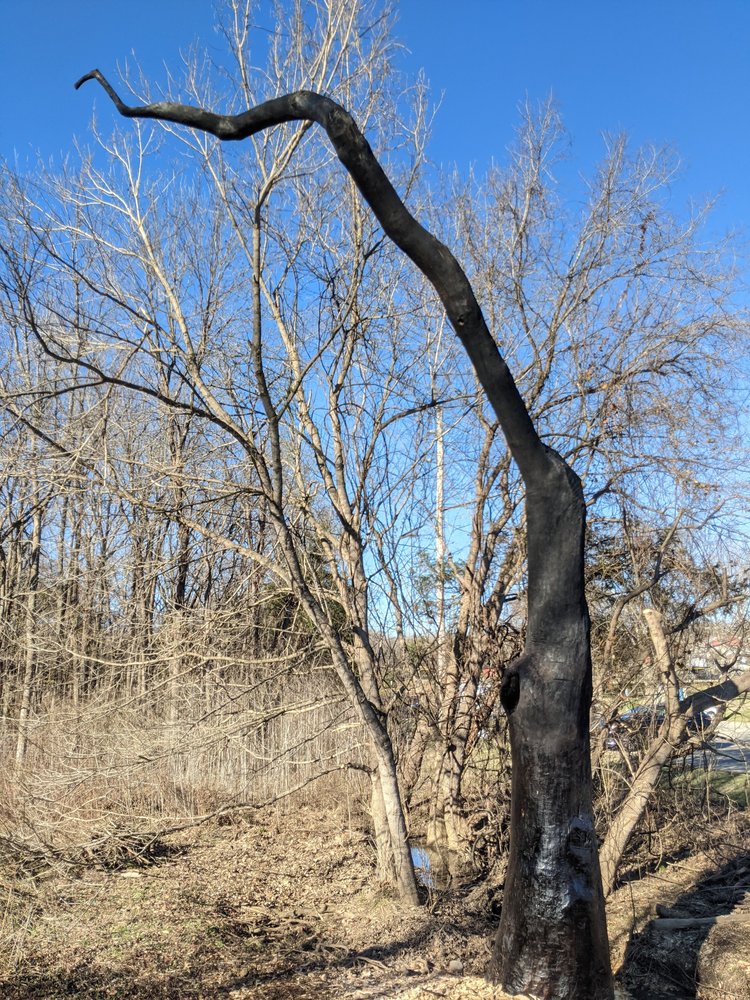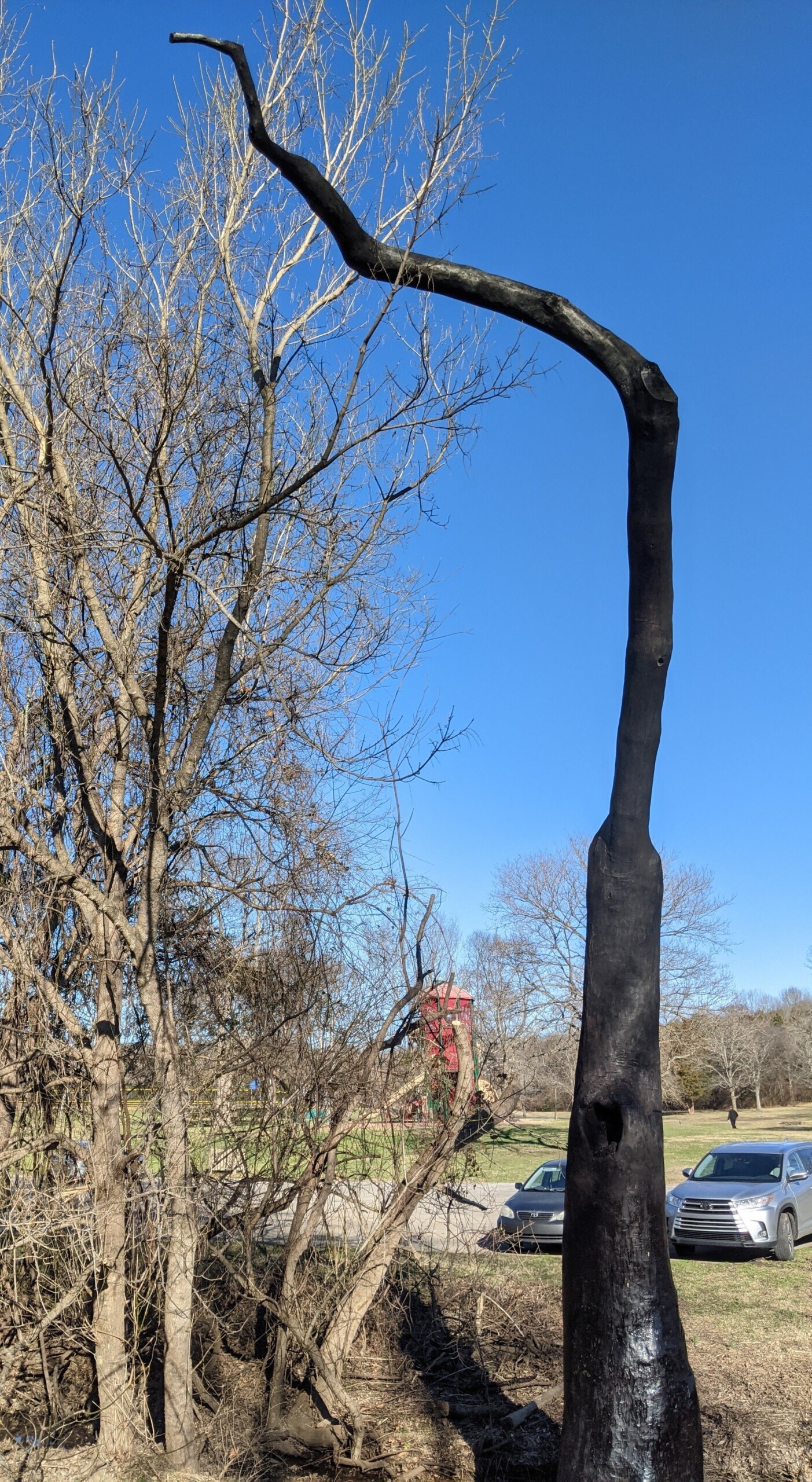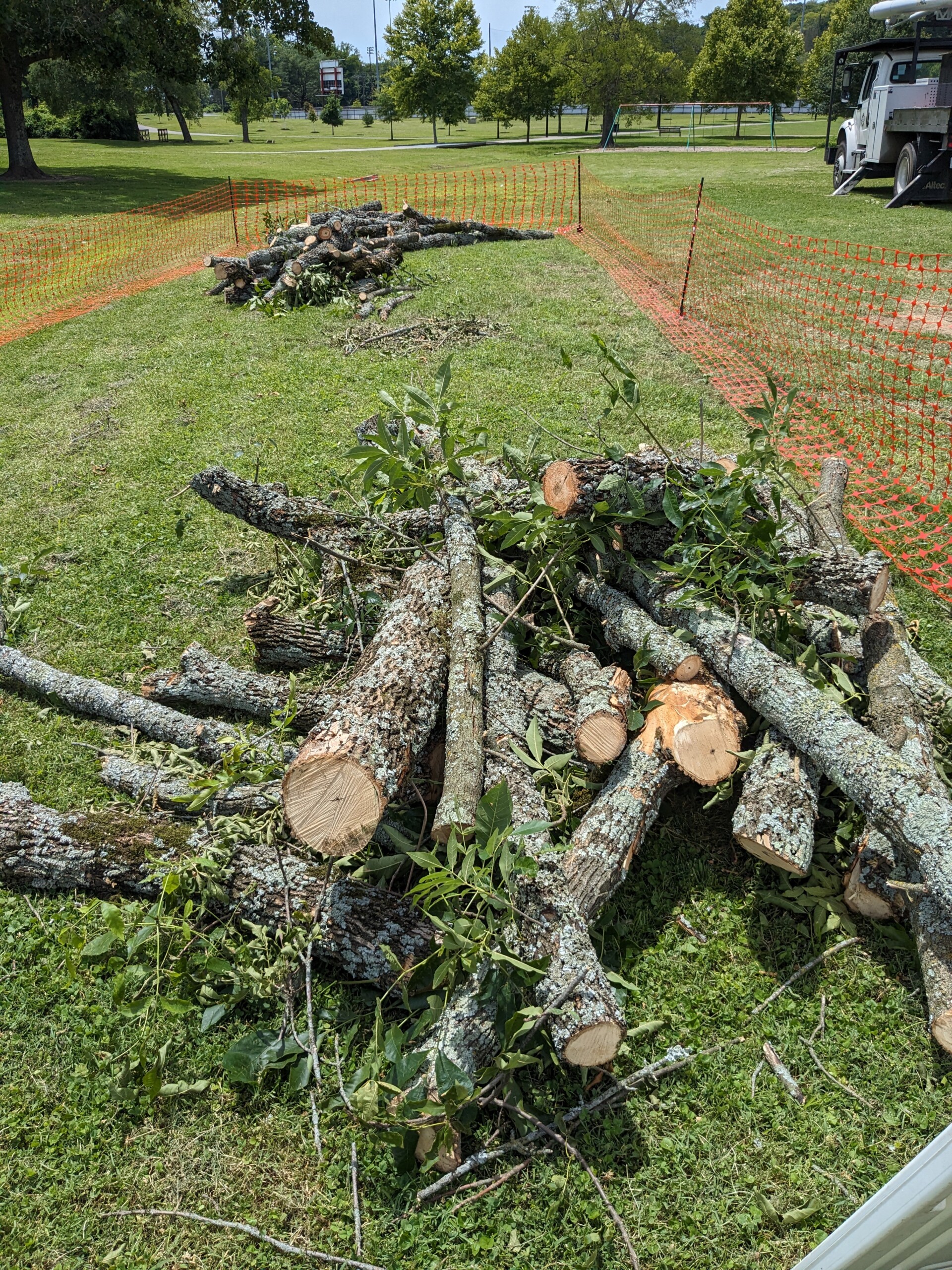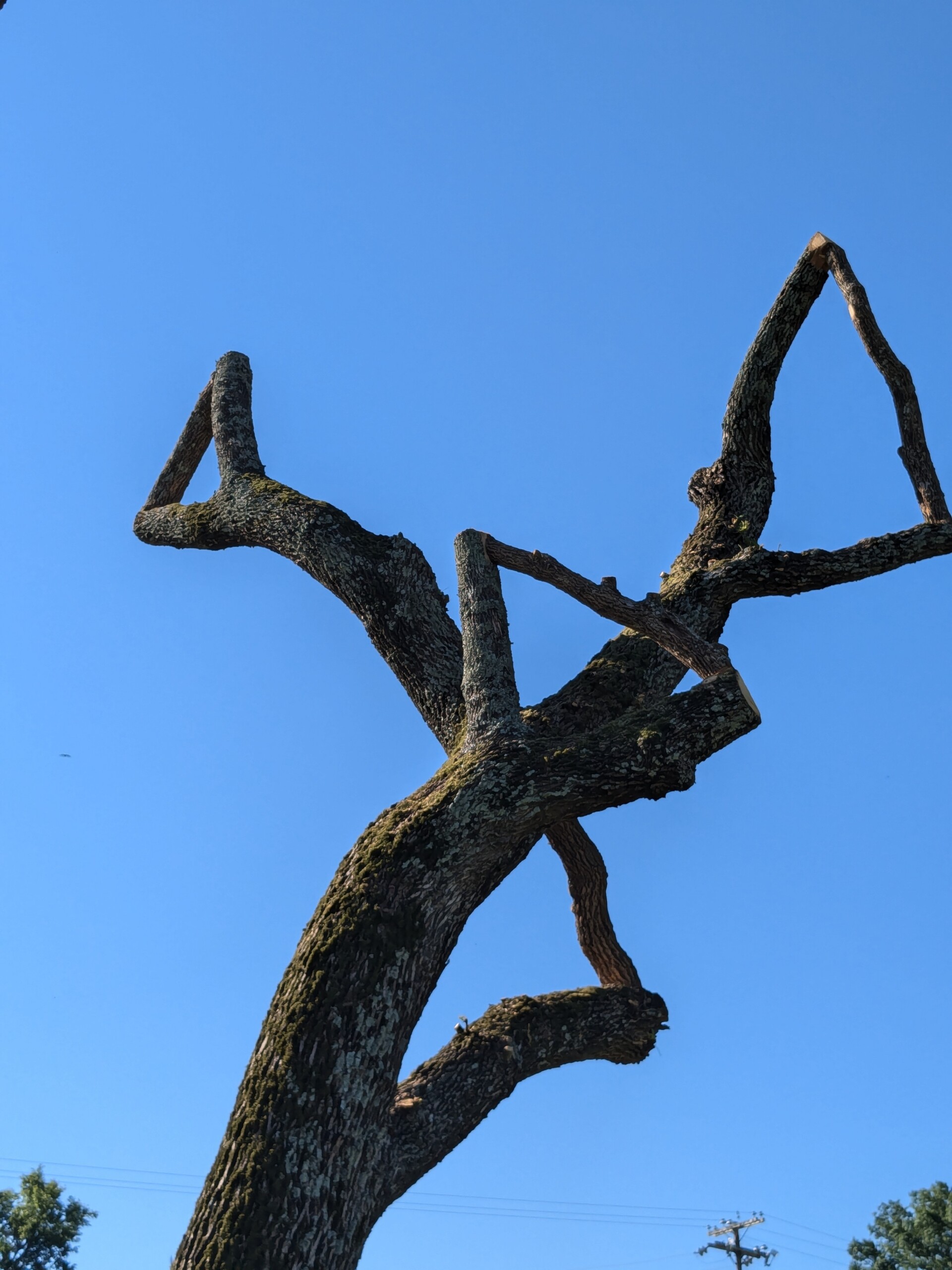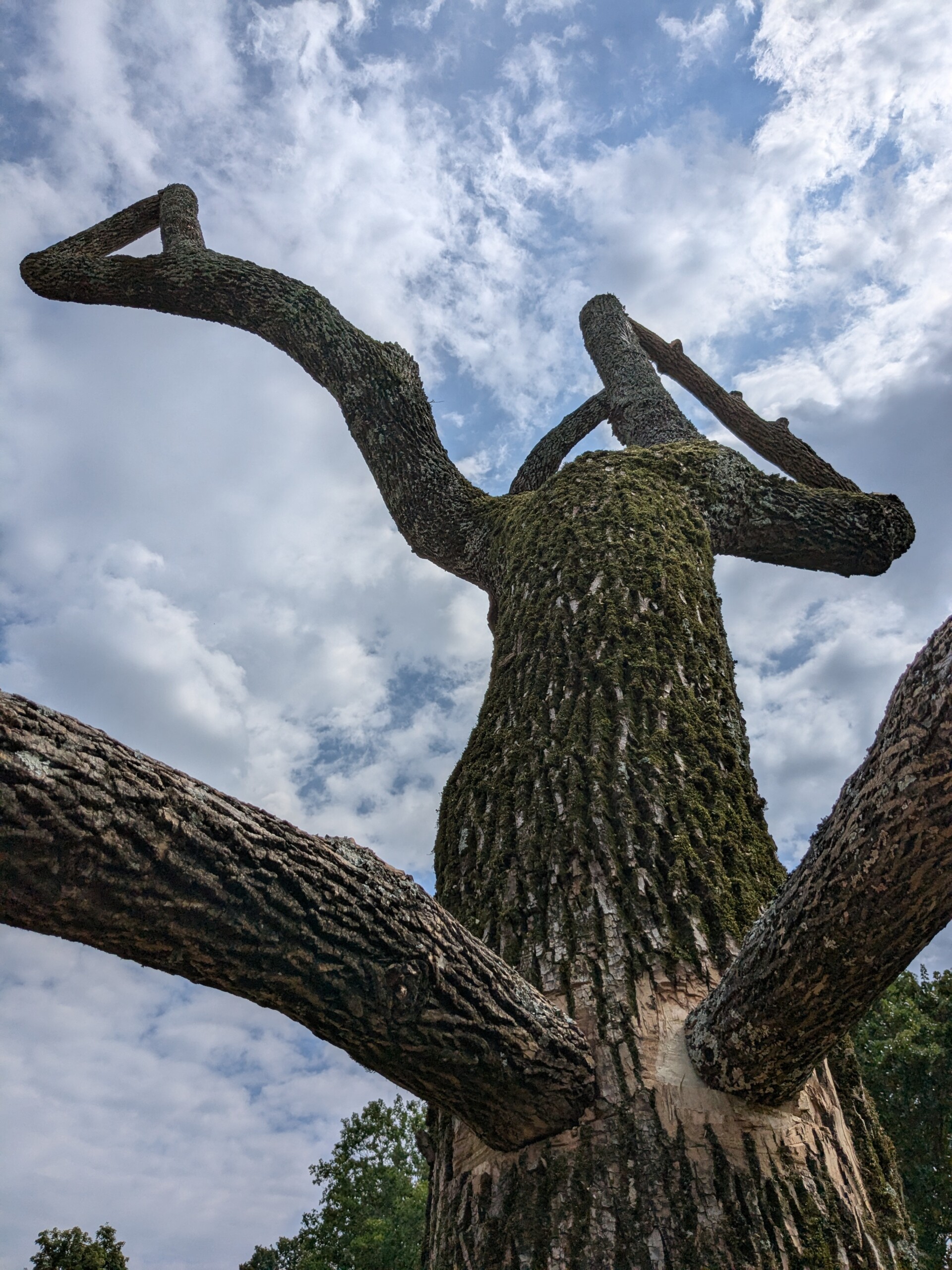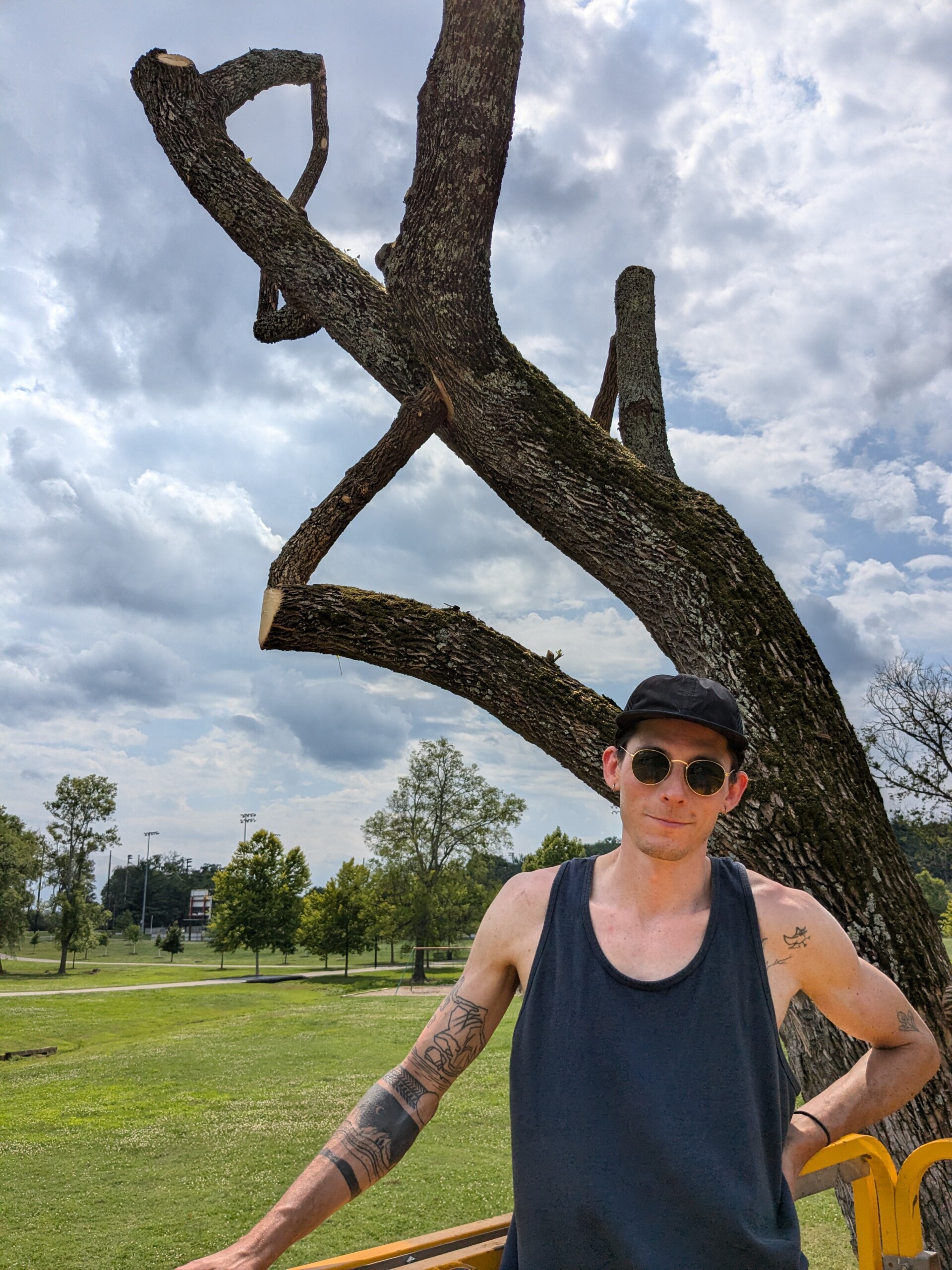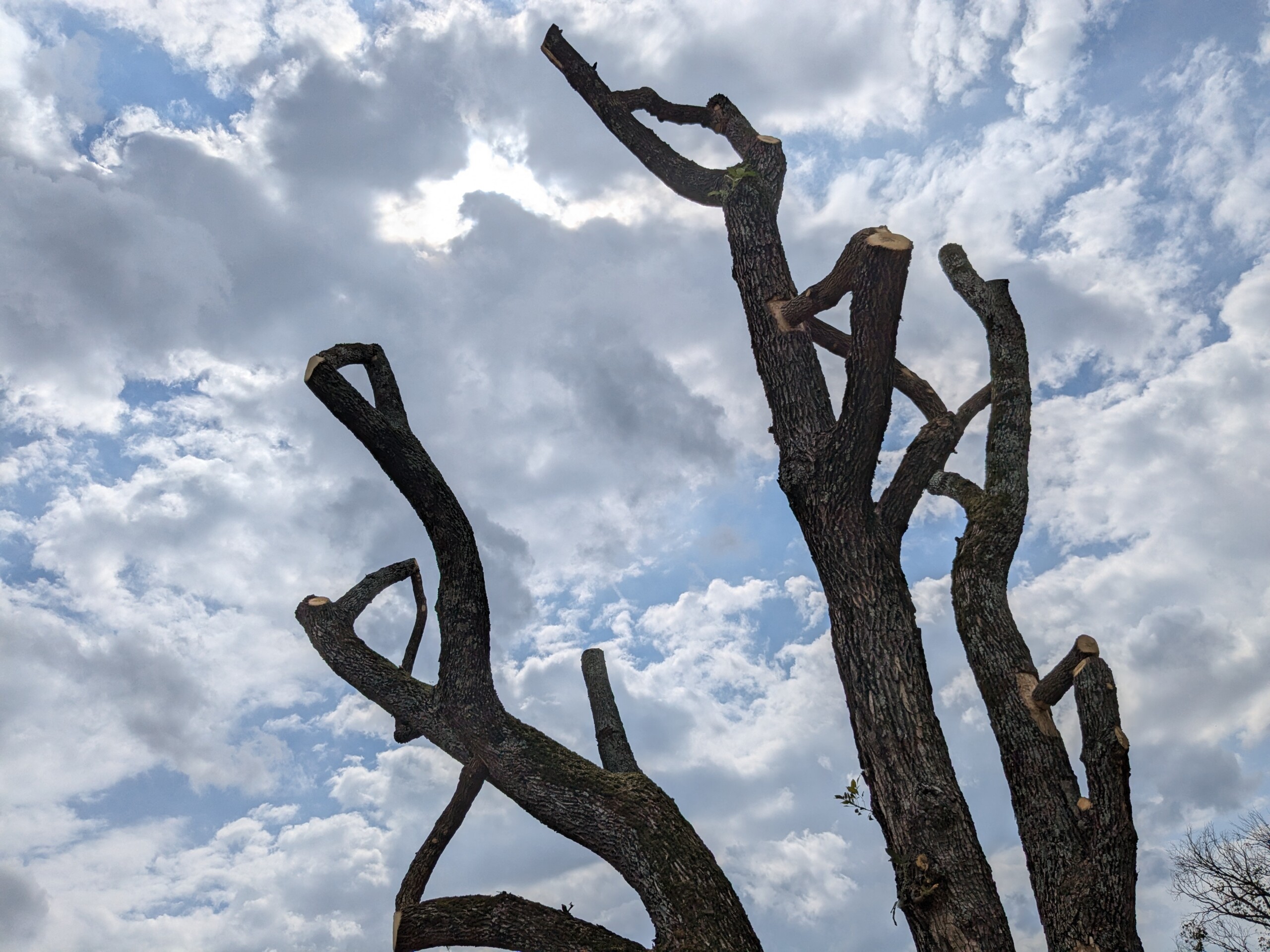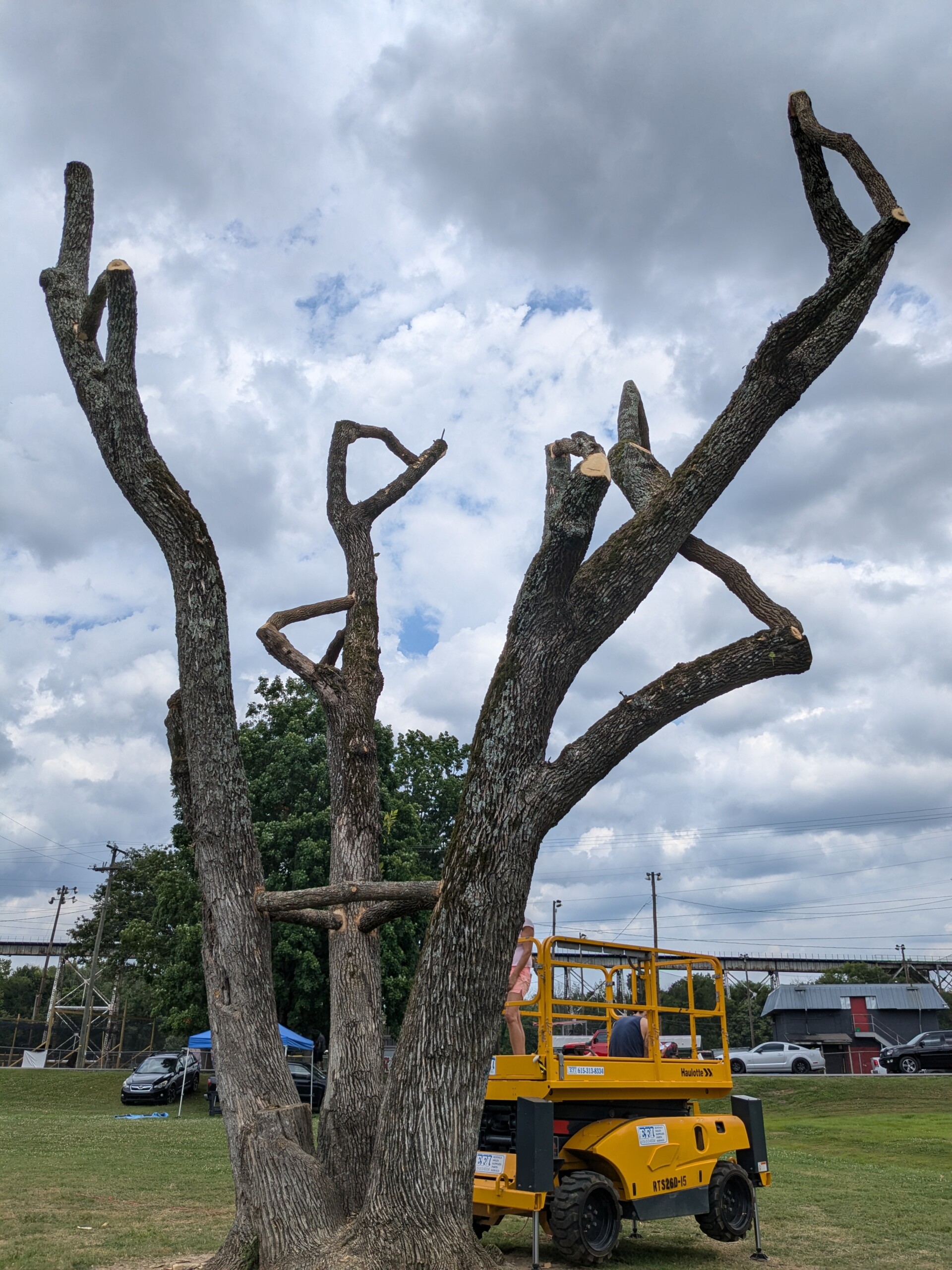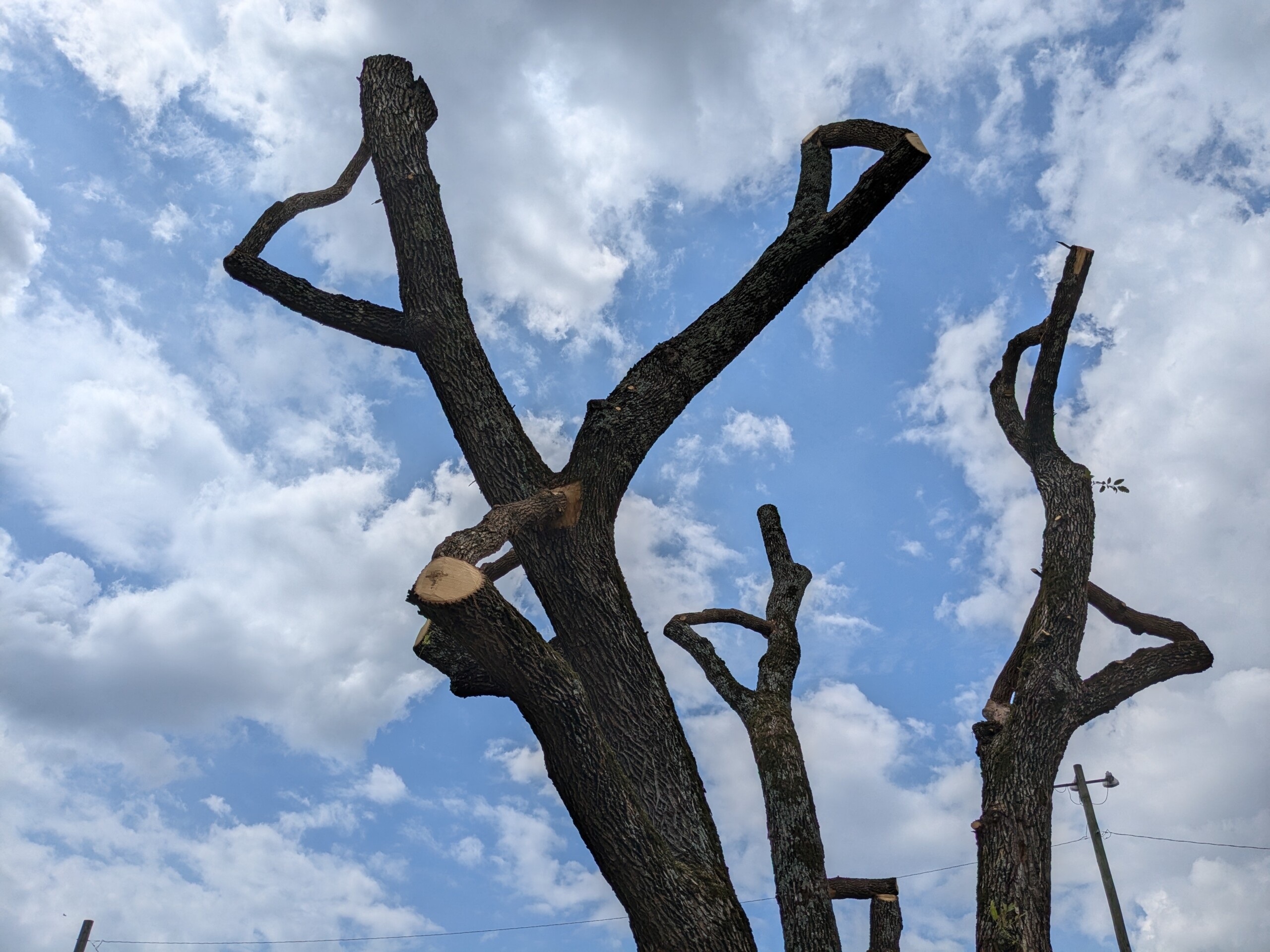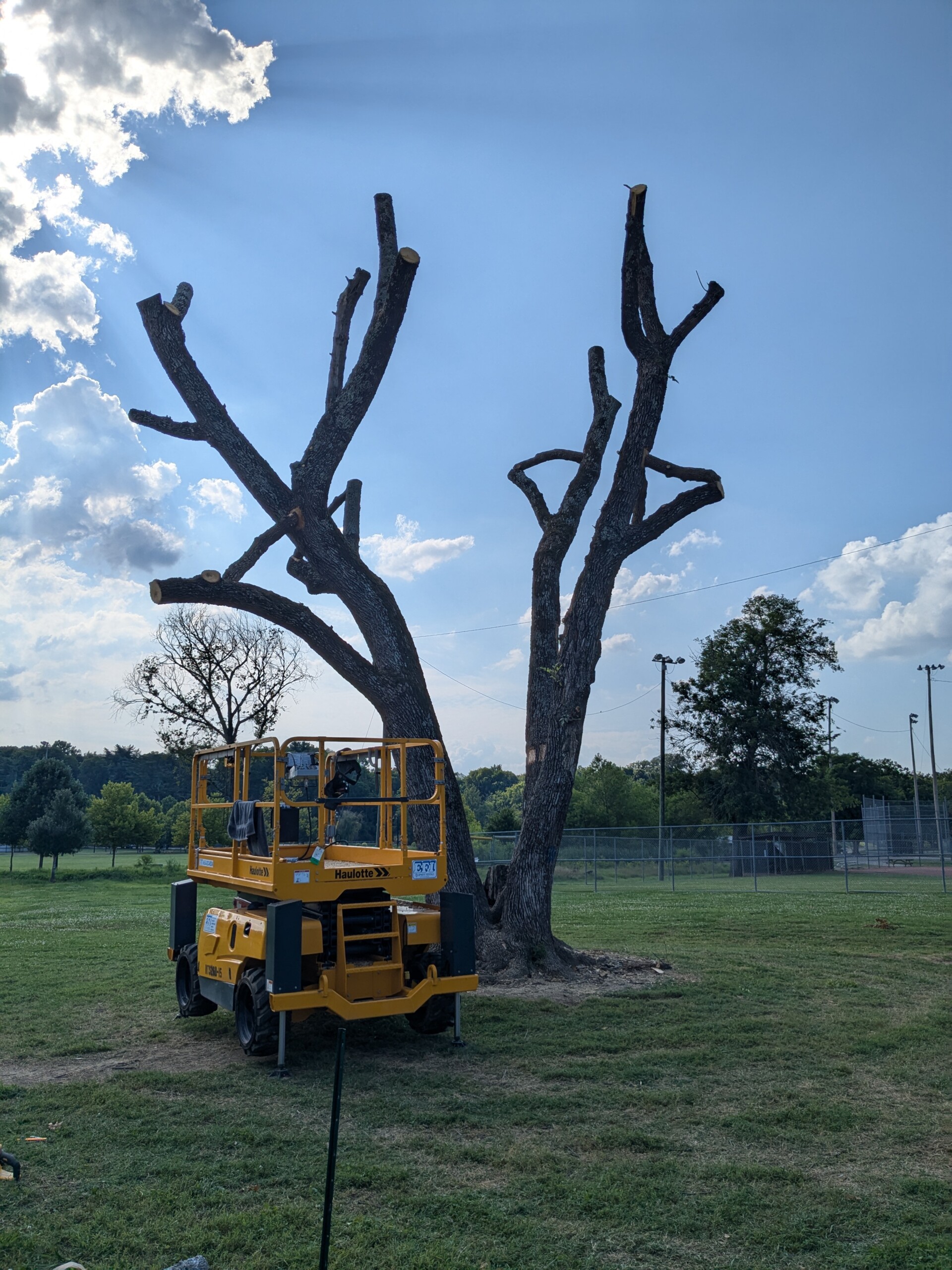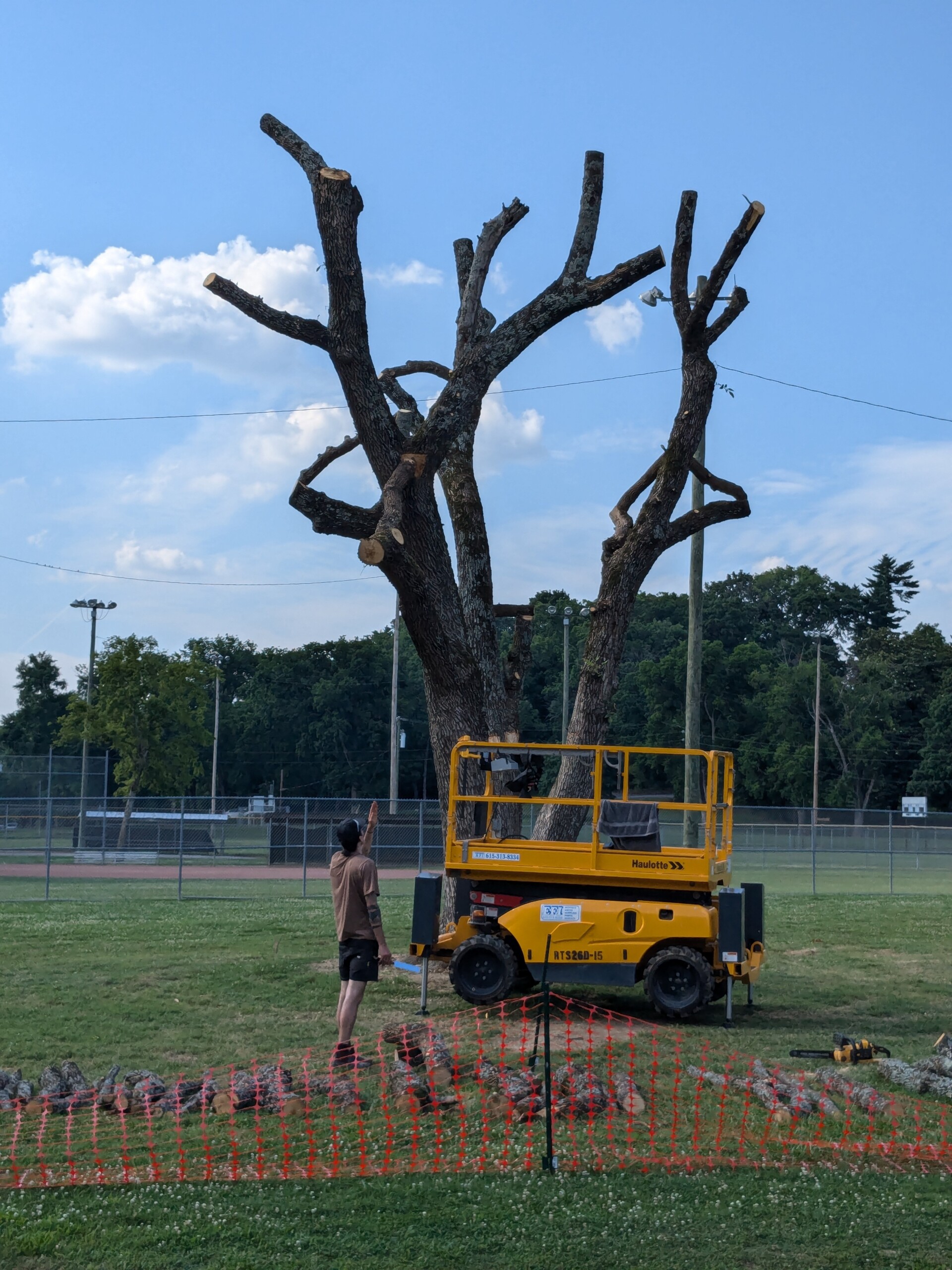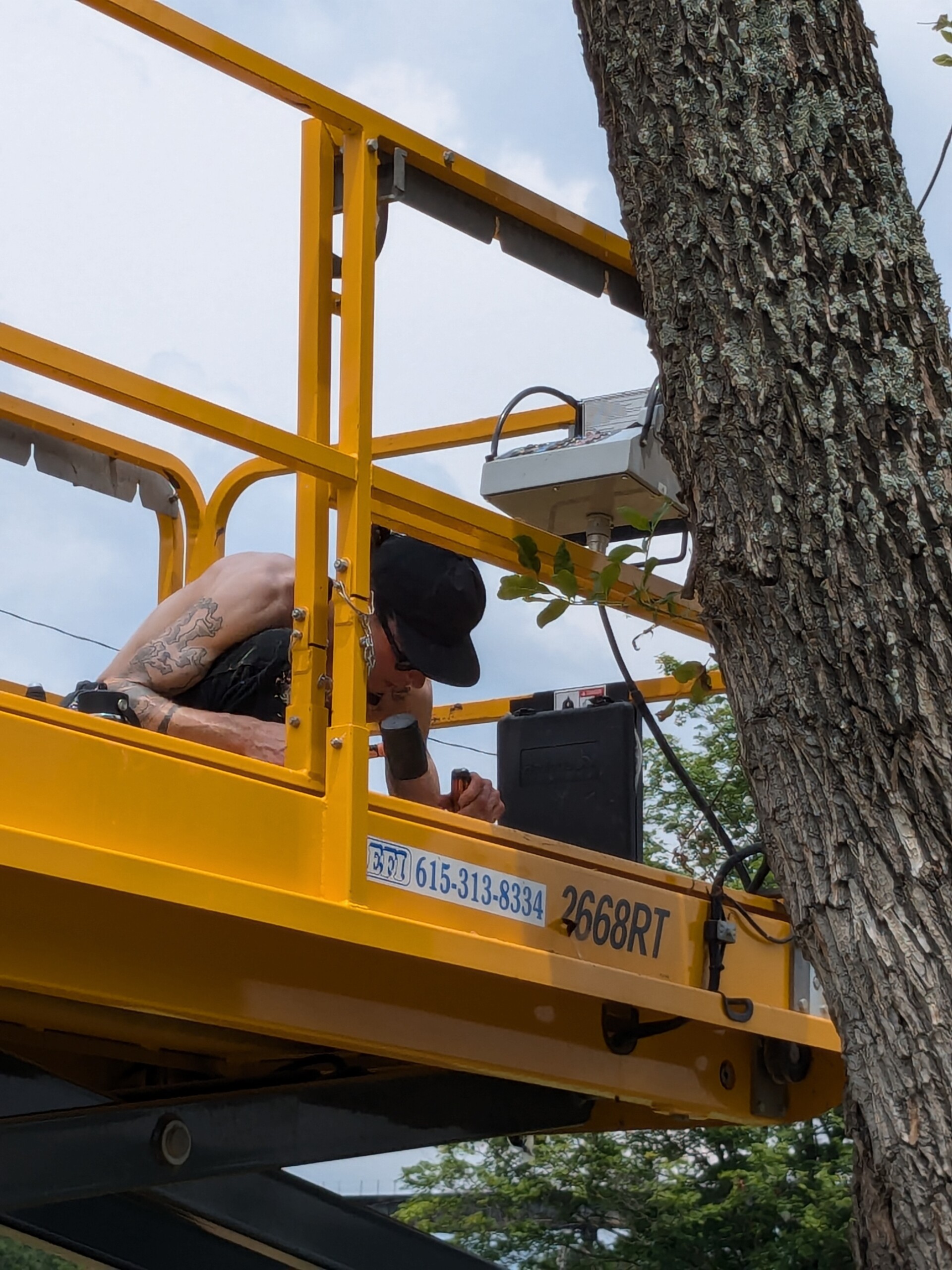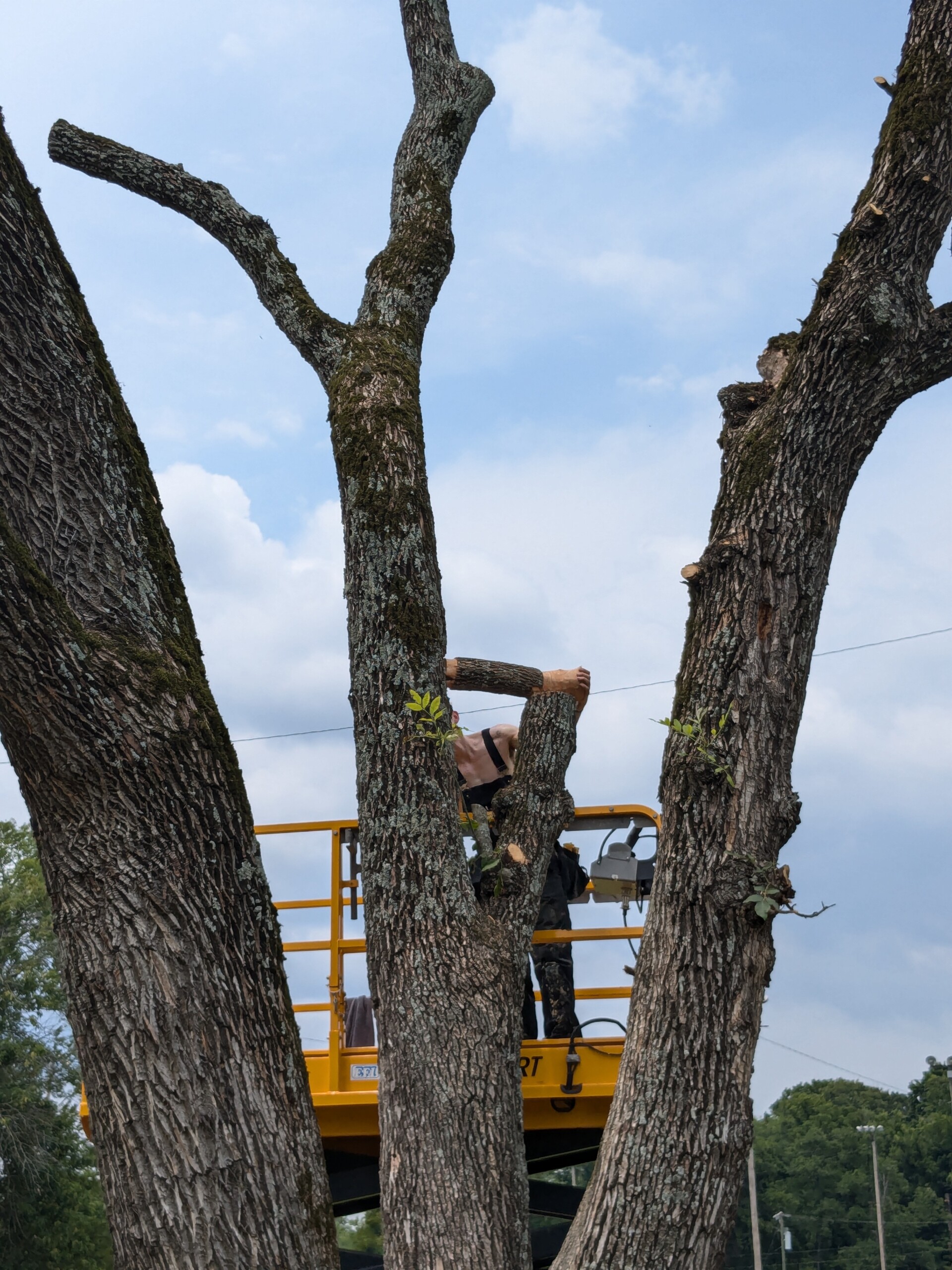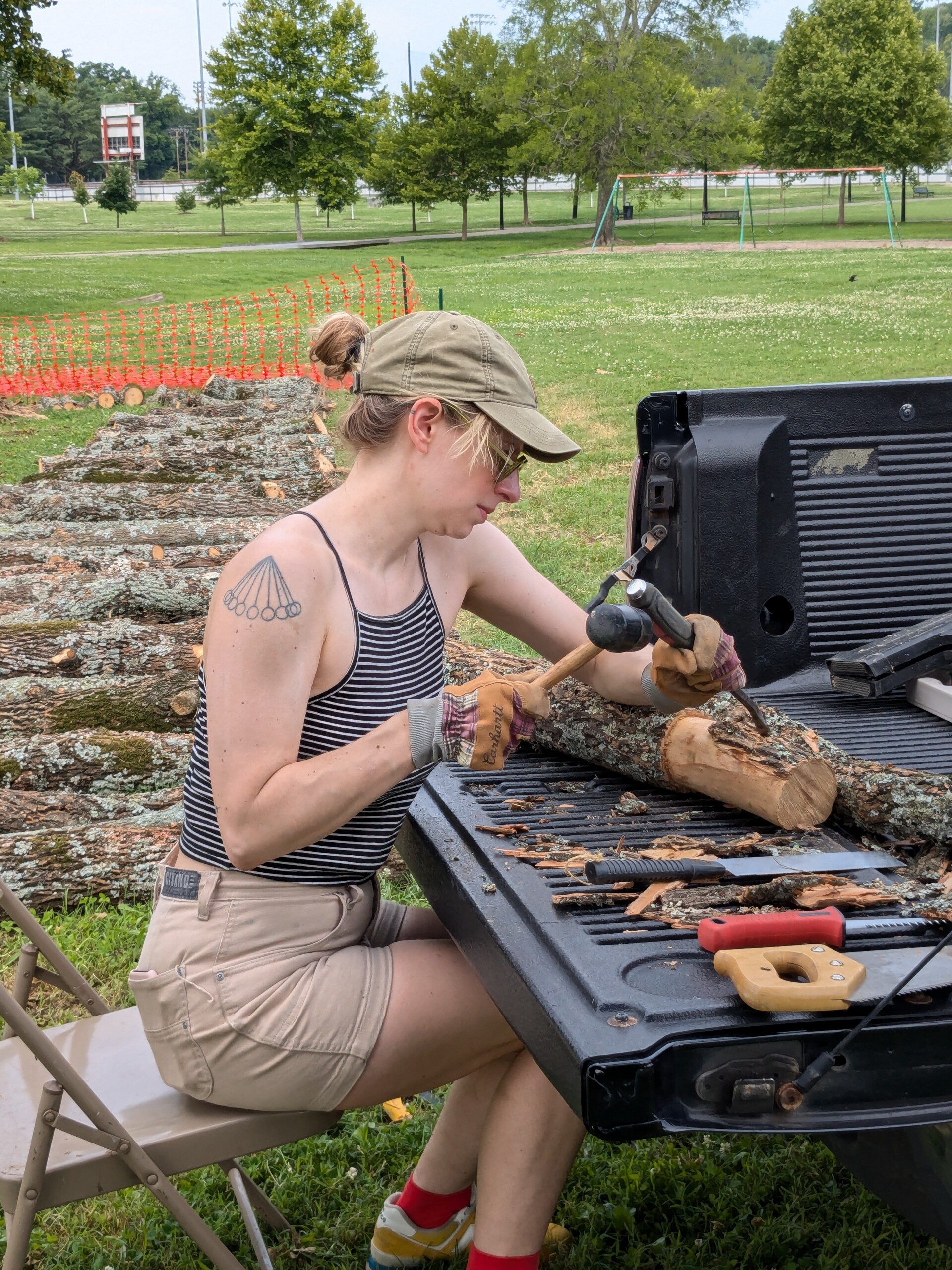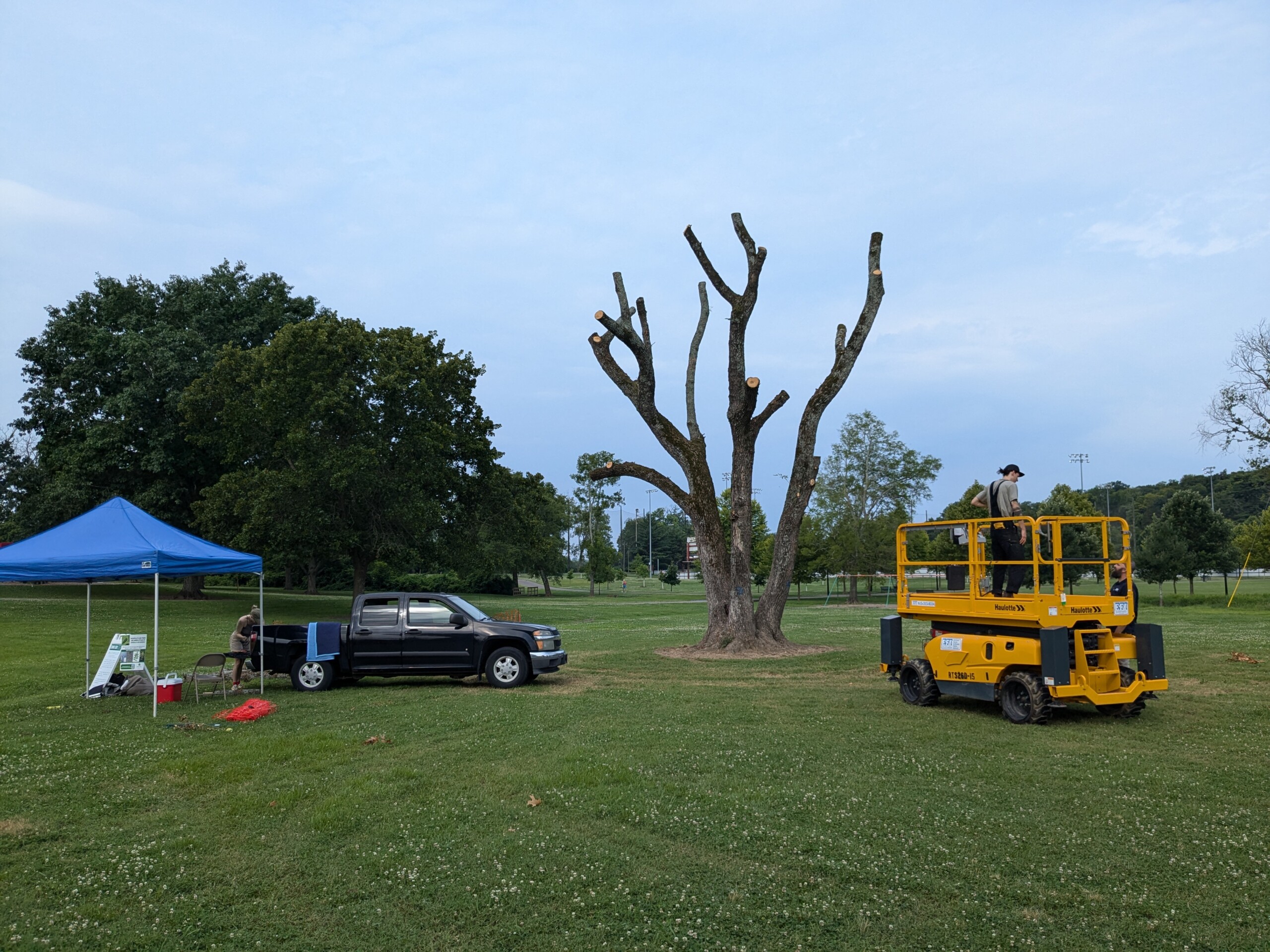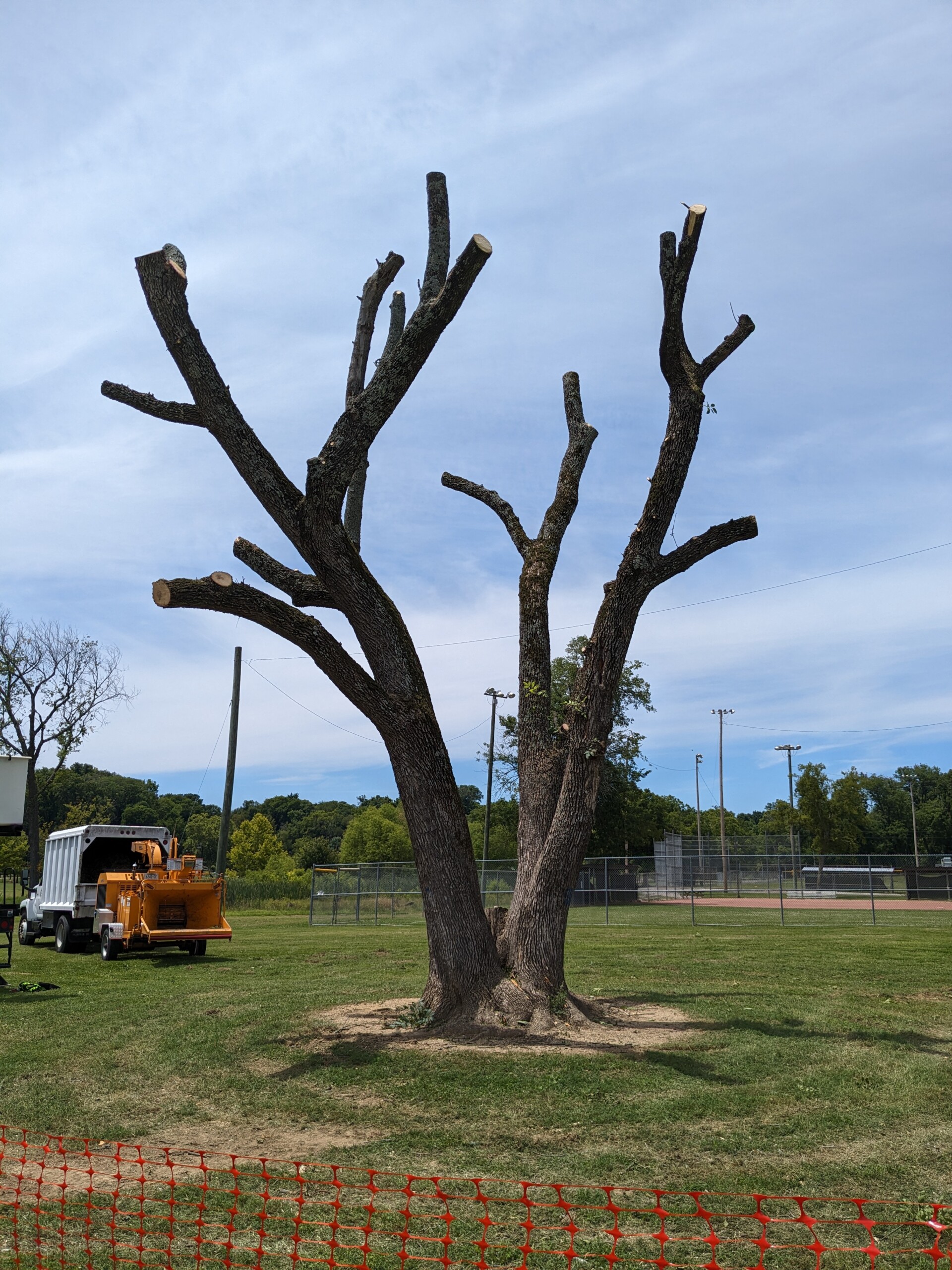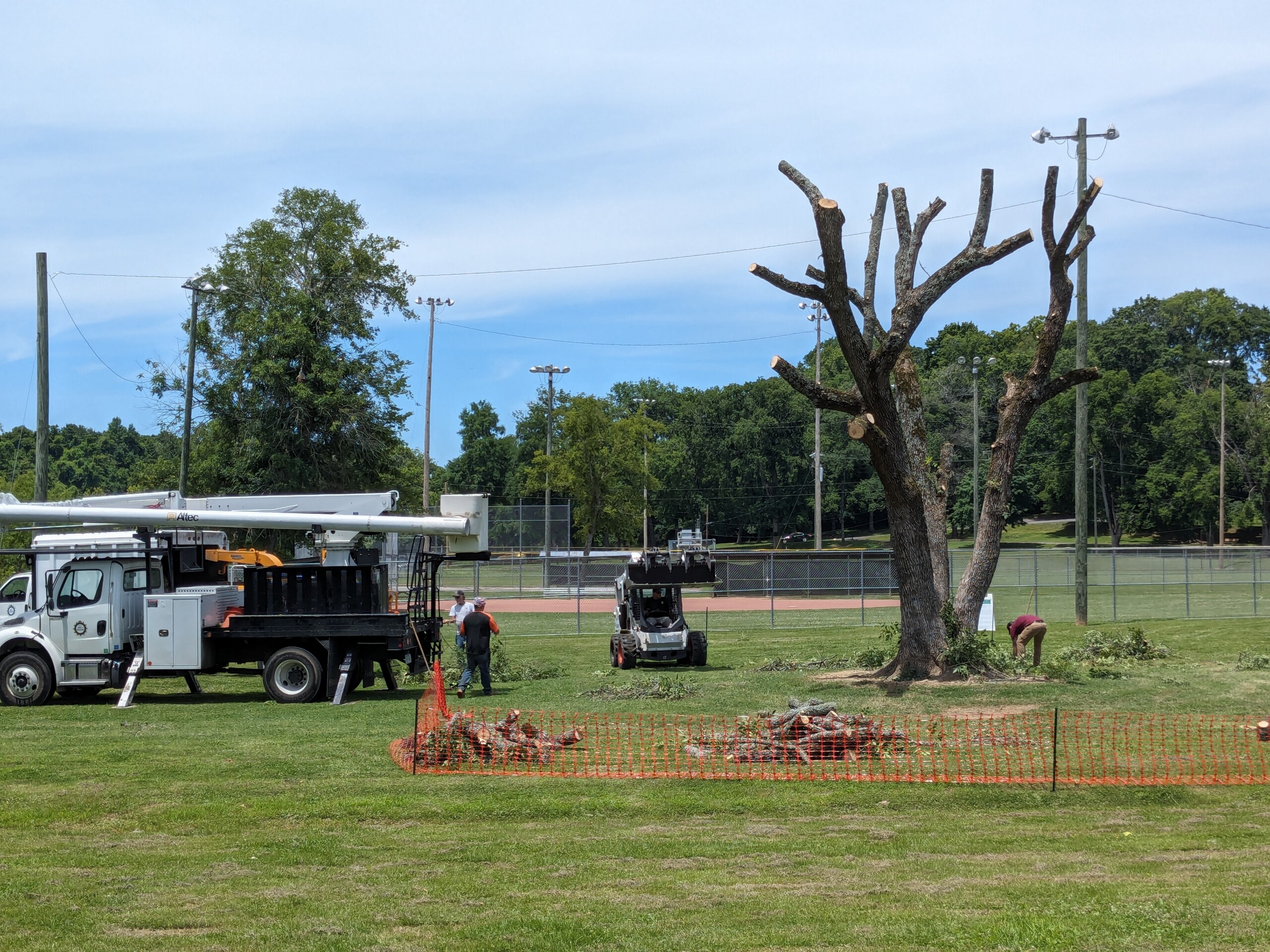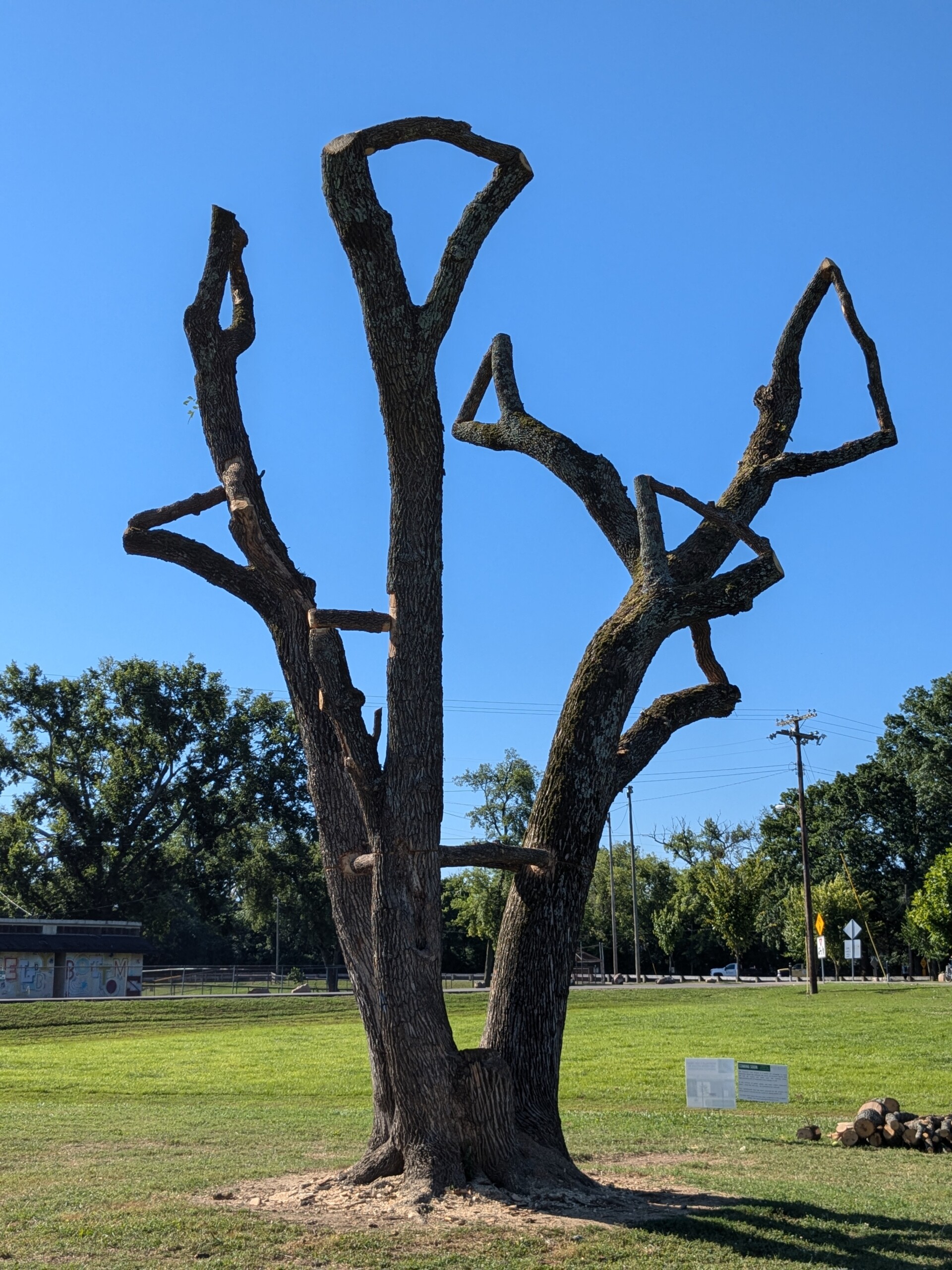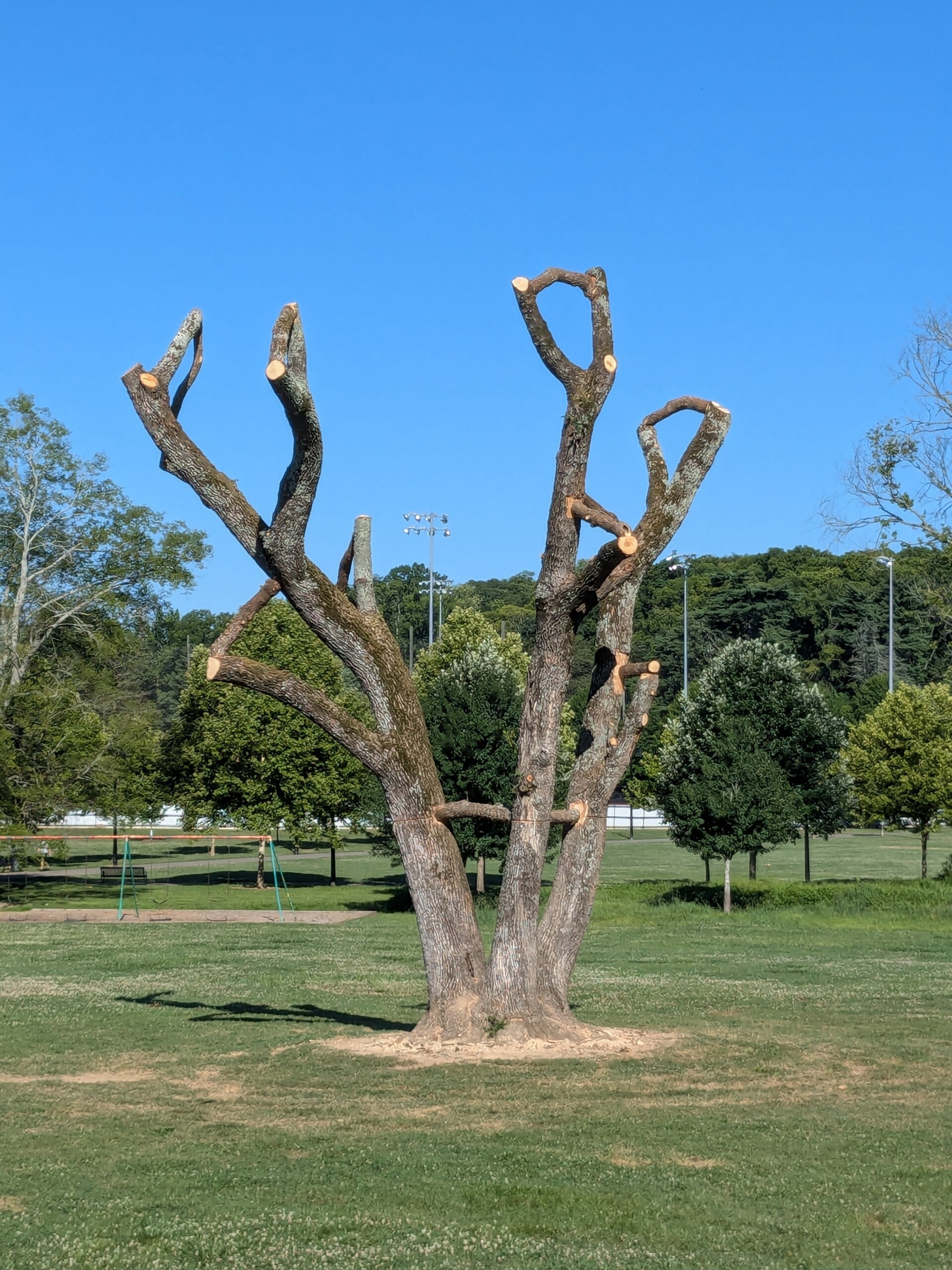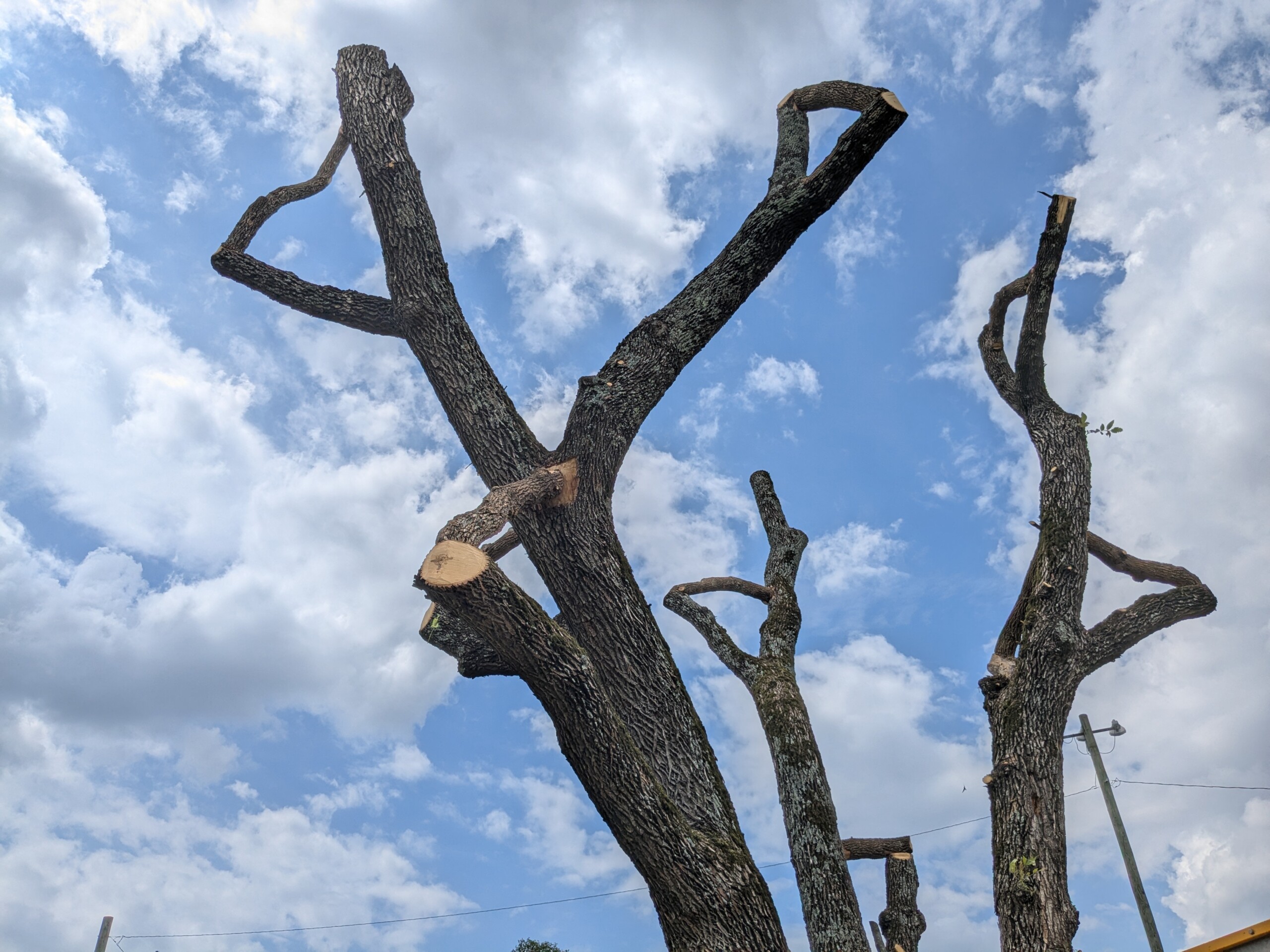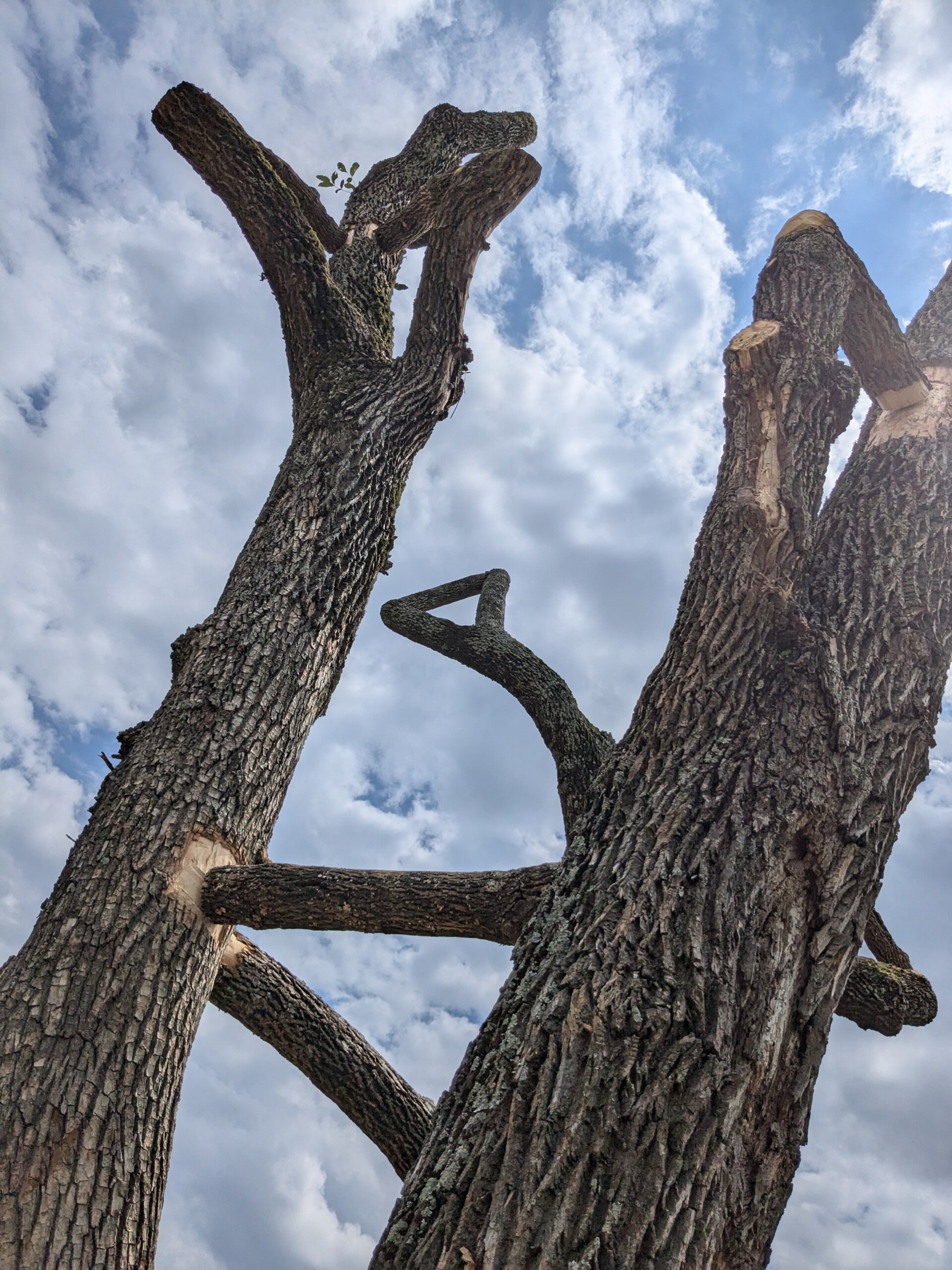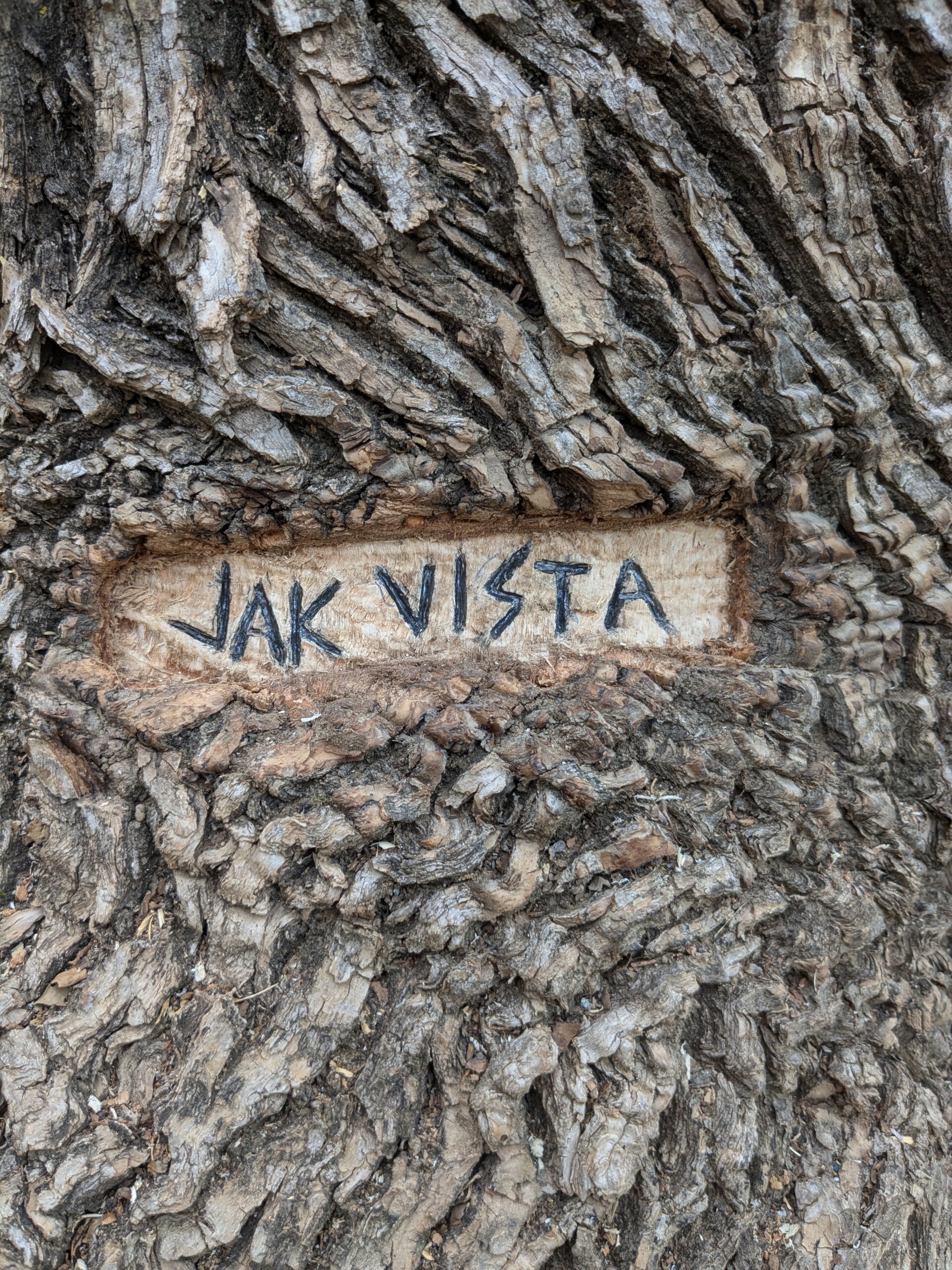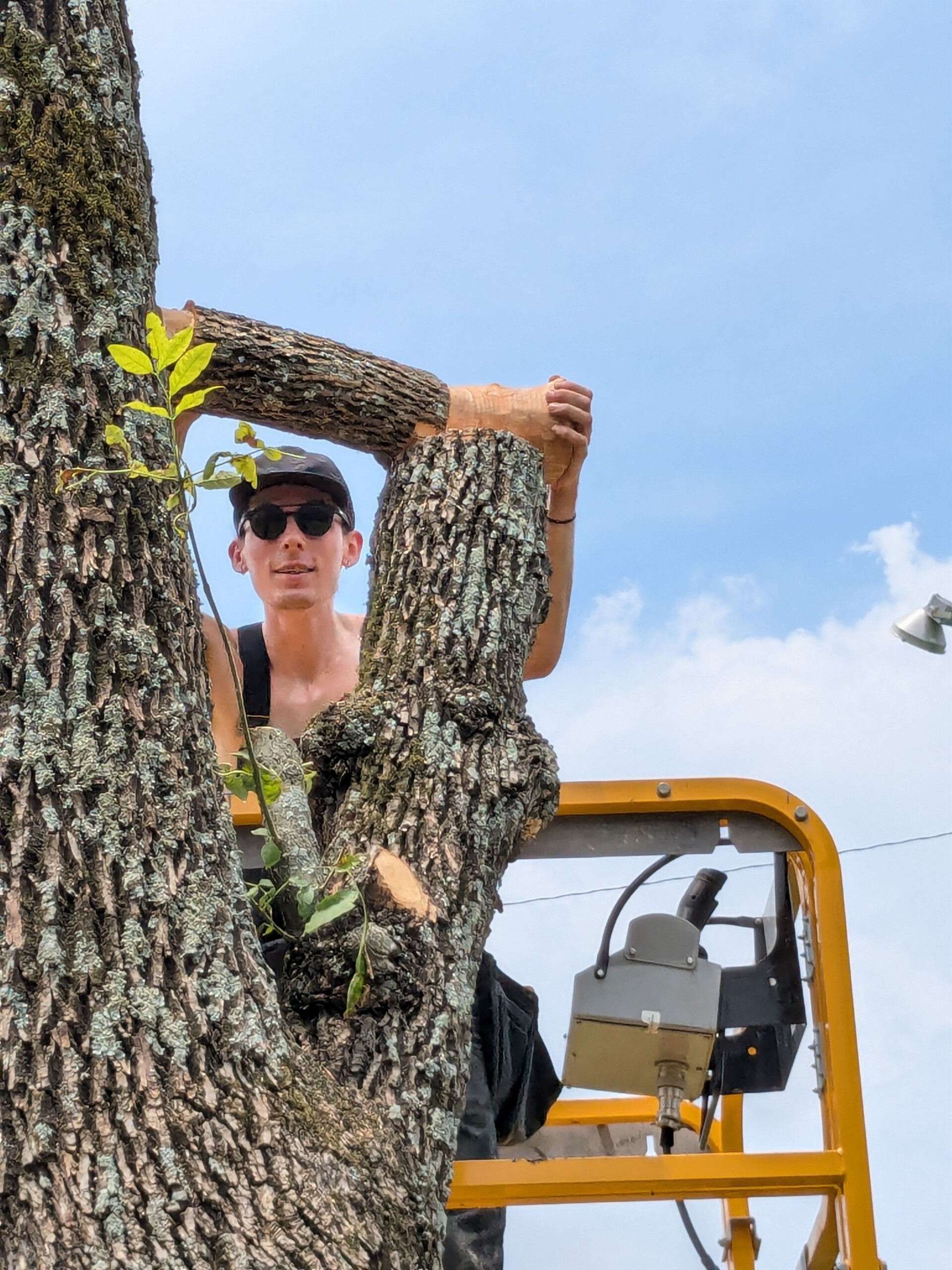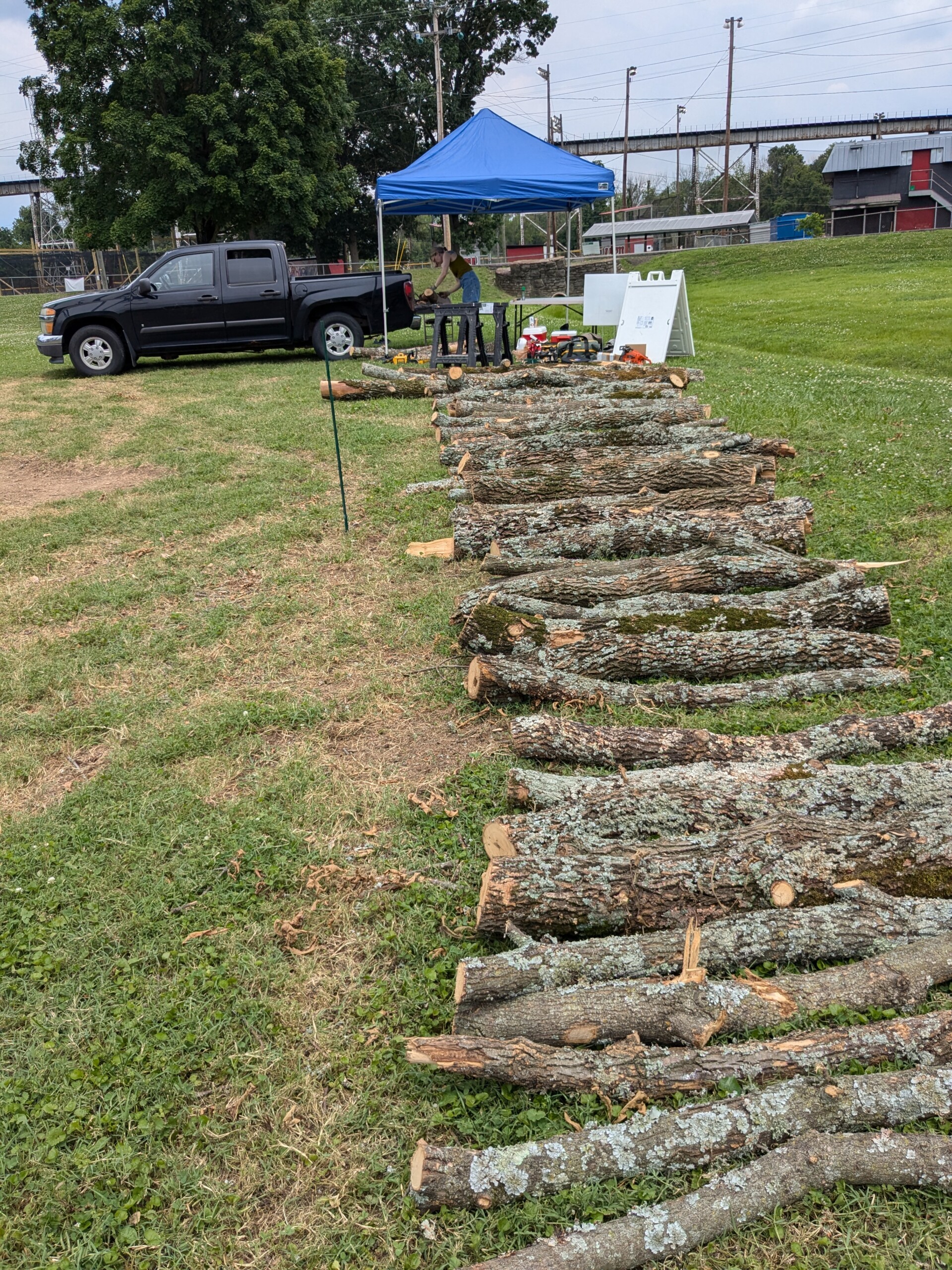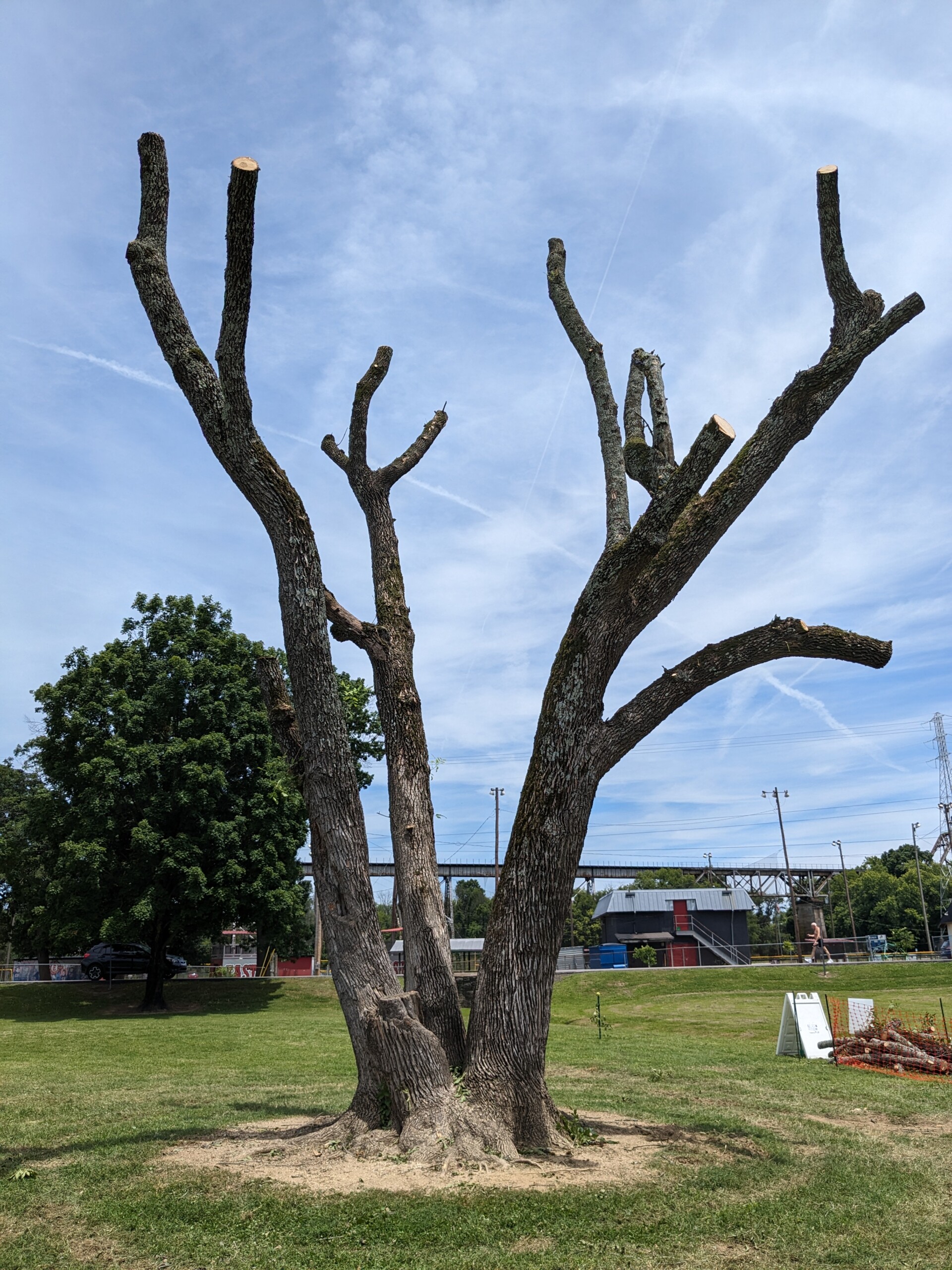Transforming Trees in Nashville’s Parks
The Nashville Tree Project was started in 2022 when the Nashville Metro Parks Department was faced with the question of what to do with thousands of trees that had been infected with the Emerald Ash Borer, an invasive insect encouraged by climate change that will kill ~10% of Nashville’s trees in the next 5 years. Modeled after the Chicago Tree Project, artists turn selected ash tree trunks in Metro Parks across Nashville into works of art, giving some of these sick and dying trees a second life as a work of vibrant public art.
Artists have addressed the trees in a variety of methods, with traditional carving and various media that have been integrated into the trees. The resulting tree sculptures have been wide ranging in subject matter as well, addressing scientific, spiritual and environmental themes. These sculptures offer unique and often unexpected encounters for visitors to Nashville parks. As long as they remain secure, the transformed trees remain standing.
About the organizations involved: Founded in 1986, the Nashville Tree Foundation works to preserve and enhance Nashville’s urban forests by planting trees in urban areas, identifying the oldest and largest trees in Davidson County, and educating the public about the value of trees. This collaborative project between the Nashville Metro Parks and NTF builds on the city’s reputation for great public art. It expands the reach of public art in Nashville by bringing sculpture to geographically diverse neighborhoods throughout the city. Also, what started out as a local endeavor has now become national and international, with artists from all over the country and the world submitting proposals and coming to Nashville to create unique sculptures.
Centennial Park
- Anthony Heinz May
- Axes of the Meliad
- 2022
- Centennial Park
- Located by the Parthenon
Downtown Riverfront
- Ben Allanoff
- Nashville Birds
- 2022
- Downtown Nashville
- Located at Riverfront Park
Cedar Hill Park
- Lindsy Davis
- Squiggle
- 2023
- Madison
- Located in Park
Shelby Park
- Joshua Kochis
- Phantom Limb
- 2024
- East Nashville
- Located in Shelby Park

